

Food scapes
Participatory Architecture of Medium Complexity
Teaching team
Diana Garcia
Rodrigo Pantoja
Yetzi Tafoya
Miguel Anaya
Viviana Barquero
Daniela Cruz
Andrea Parga
Gilberto Osorio
Alliances
Kent State University / Brendan Ho + Cat Soergel Marshall.
UNAM / Elena Tudela + Daniela Daou (Seminario Espacial de Titulación Intersticios 8).
Authors
Alejandro Meza Muñiz
Santiago Lopez Tello Juárez
Dana Paola Bernal Serrano
The The The The The
site soil project water production
The site
Project replication
Map of roads
Photos site
Manifesto and strategies
Intentions
The project
Program phases
5 de febrero connections
Residential zone connections
Users
Queretaro degraded soil
Feozem soil
Soil remediation
Flood zone
Water harvesting strategies
Water catchment
Rain garden system
Water system section
Rainwater harvesting calculation
Rainwater harvesting
Drip irrigation scheme
Insect based food production
Nutritional and environmental data
Cricket production
Production cycle
Nutritional information
Crop
Cultivation phases
Plantin information
Landscape The Architectural
Plant Palette
Plant palette rain garden
Vegetation catalog
Vegetation planting
Production building program
Section production building
Structure Commercial building
Section commercial building
Structure
Work program crops
Work program building
Site hours
Detailed cross section
Key plan
References

Conscious Industry transforms an underutilized urban void into an articulating node between industrial and residential zones, integrating ecological, social and productive functions through a sustainable and adaptable design.
With a conscious garden and an elevated building, a permeable way of living in dialogue with the environment is proposed, where rainwater is used to regenerate the soil. Sustainable practices such as cricket farming are incorporated, challenging cultural barriers with low impact models. The design allows for natural and human flows, fostering awareness of the territory and its resources. The void thus becomes a space with identity, prepared for the future.
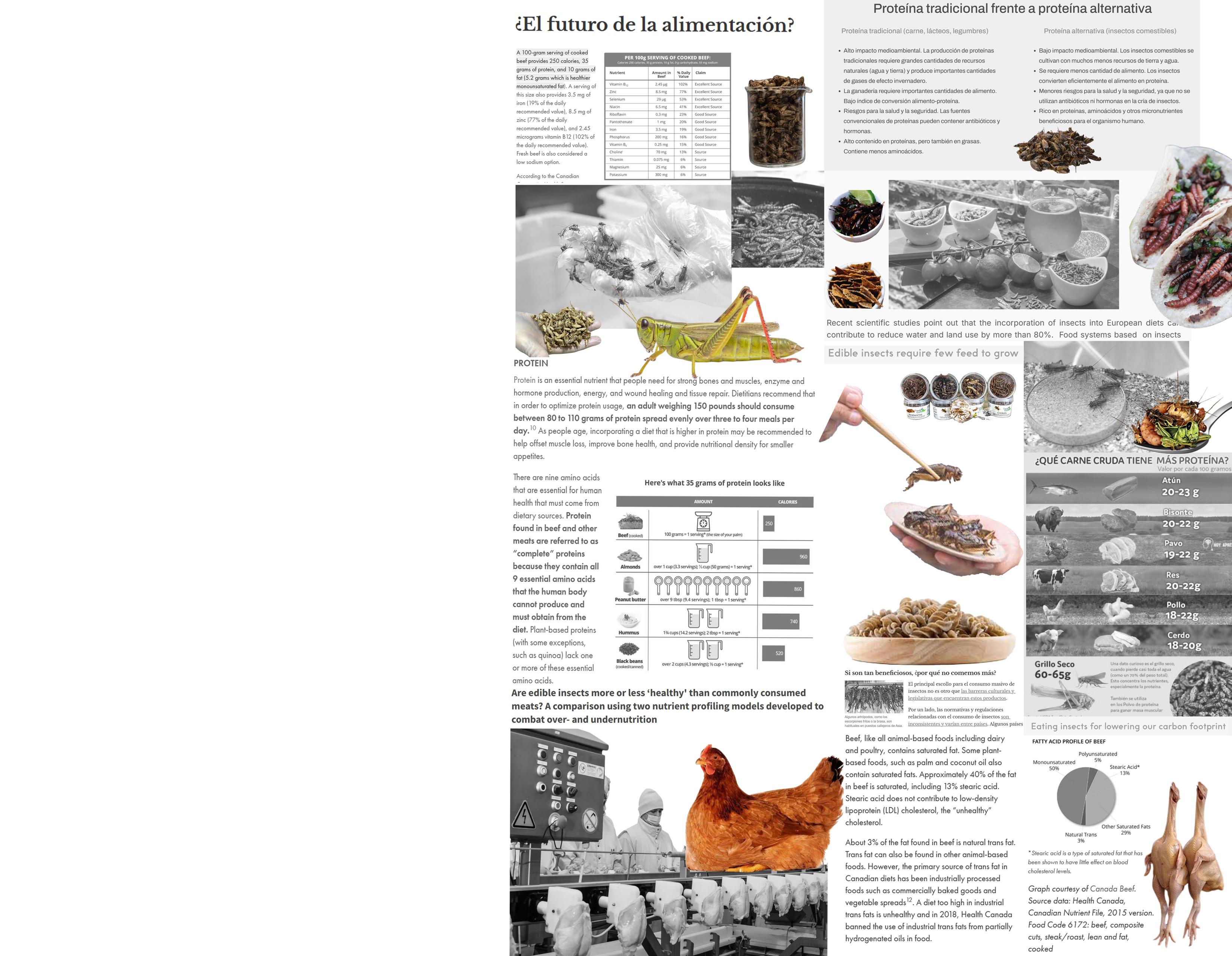
We believe that the constant heartbeat of the world invites us to rethink our way of inhabiting it, to question the customs that, as roots, have sustained us but also limited us. In this necessary turn, we choose paths that honor the earth and its care. We know that talking about crickets as food challenges cultural imaginaries, but we see in them a seed of change. We are committed to clarity and amazement, to a conscious industry that nourishes with meaning. We want to bring people closer to a way of eating that not only sustains the body, but also the planet, in a profound gesture of respect and renewal.


The site
The project is located right on the edge of the QRO district, in front of one of its busiest limits. The site has its main access on Avenida 5 de Febrero and extends to connect, at the rear, with the Felipe Carrillo Puerto residential area through Prolongación 18 de Marzo street. The environment combines an industrial context with the nearby presence of UNITEC, which makes the site a strategic point with the potential to articulate pedestrian, productive and residential dynamics.


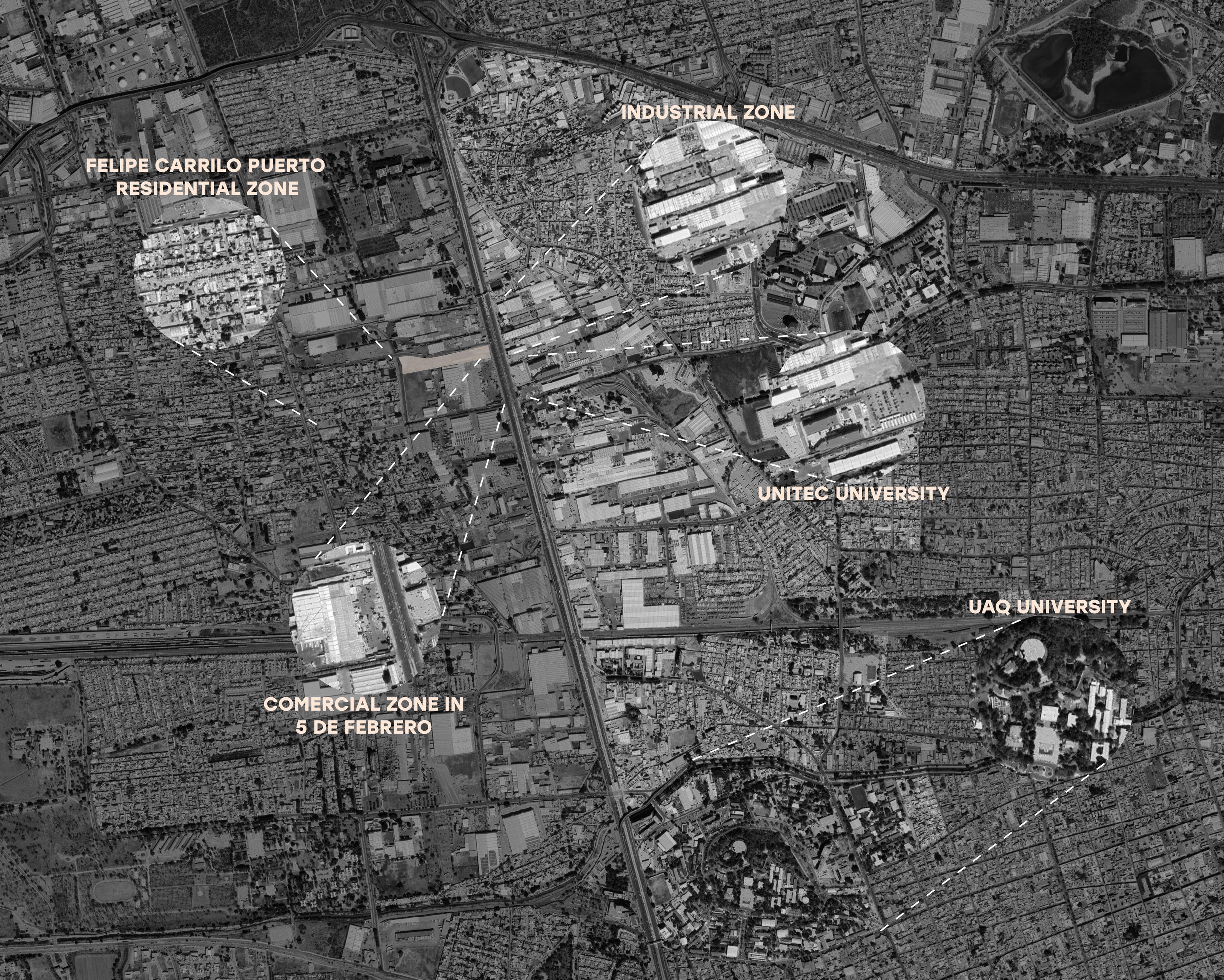
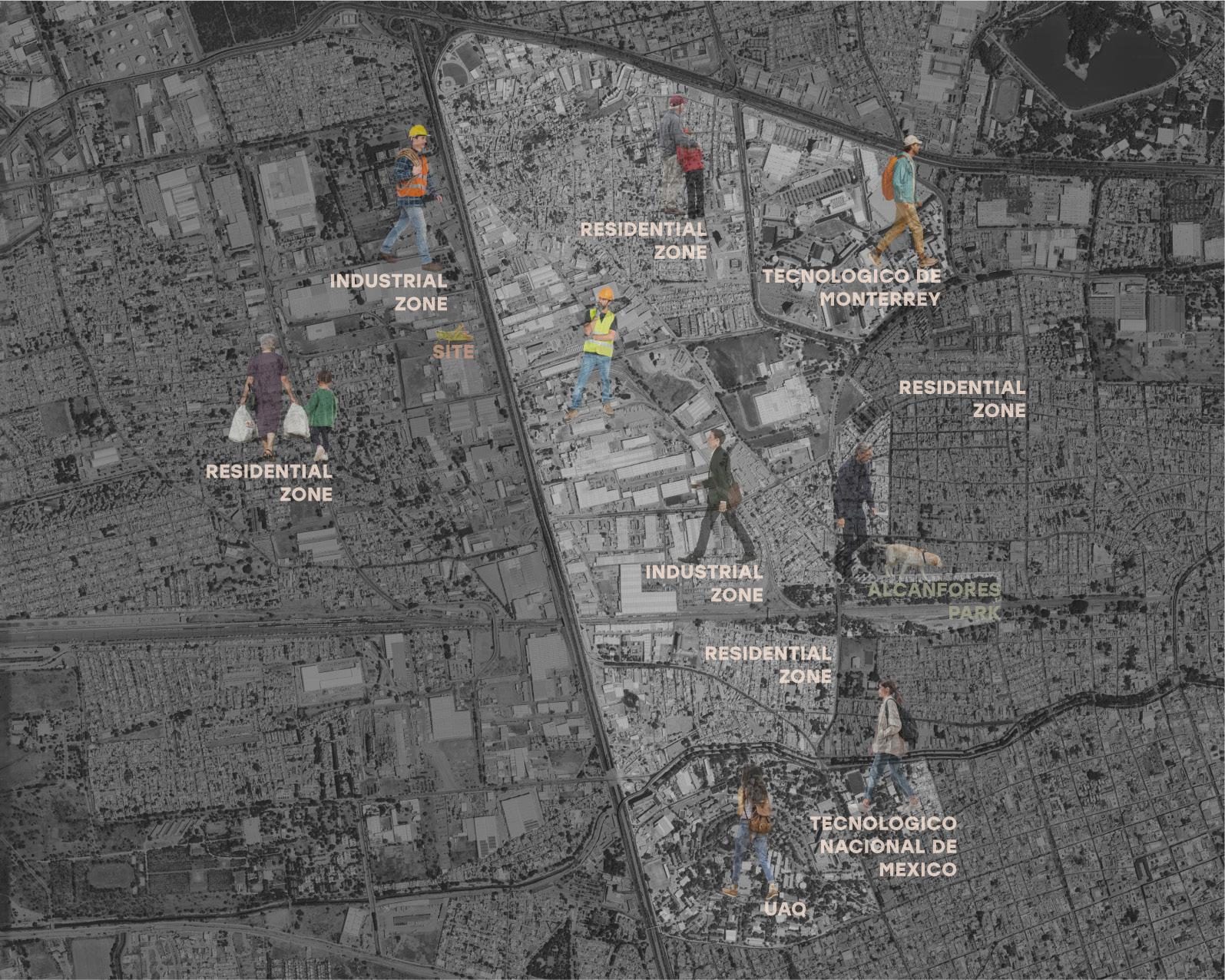
Project replication
We firmly believe in a future where production processes are integrated with the evolution of the planet’s forms and conditions, without losing functionality, economic viability or environmental responsibility. For this reason, we identified spaces with similar characteristics to our property, where the implementation of an analogous system would allow us to promote soil regeneration and trigger multiple complementary benefits, guided by an ideology focused on the improvement and preservation of nature, promoting conscious, ethical and, above all, sustainable processes.

Map of roads
MAP OF ROADS
SYMBOLOGY
Scale 1:19000 bus stops bicycle path bus routes
5 de Febrero
Routes through 5 de Febrero:
• Main Routes
T-03: Prados del Sol – Fraccionamiento Vistana
T-04: Desarrollo Familiar – Terminal de Autobuses de Querétaro (TAQ)
T-06: Terminal Balvanera – Parque Industrial Querétaro
T-08: Santa Rosa Jáuregui – Terminal de Autobuses de Querétaro (TAQ)
T-09: Terminal Balvanera – IMSS Hospital General No. 1
T-10: Valle Dorado – Terminal Balvanera
T-11: El Pozo – UAQ Aeropuerto
T-12: La Pradera – Zibatá
• Complementary Routes:
C21: Las Flores – Fraccionamiento Junípero Serra
C31: Paseo de San Miguel – Independencia
C40: Bulevar de las Américas – Las Teresitas
C41: Bulevar de las Américas – Cerrito Colorado
C50: Colonia 10 de Abril – Mercado de la Cruz
C55: Colonia Sergio Villaseñor – Rancho Bellavista
C62: Colonia Che Guevara – Paseos del Pedregal
C68: Fraccionamiento Eduardo Loarca – Cerrito Colorado
C69: Santa Rosa Jáuregui – Terminal de Autobuses de Querétaro (TAQ)
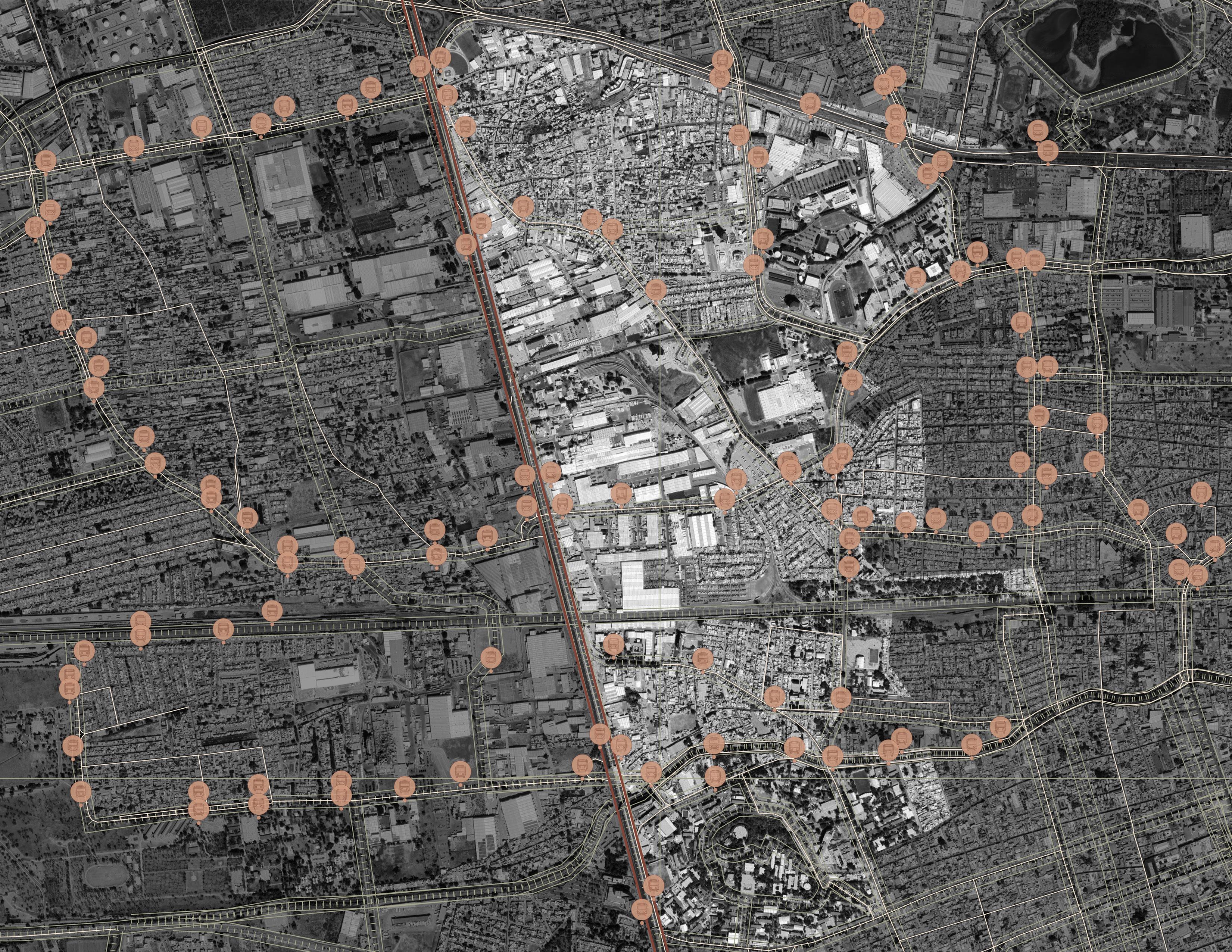

QRO
District Opportunity zone


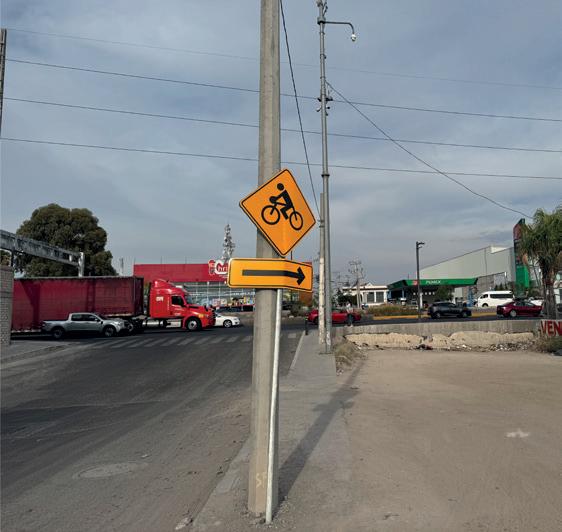
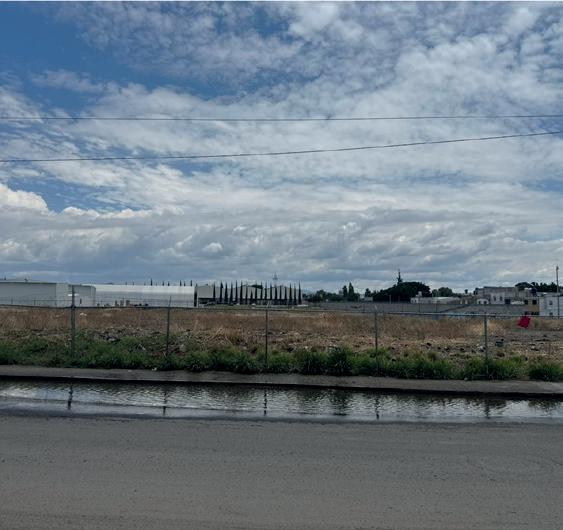



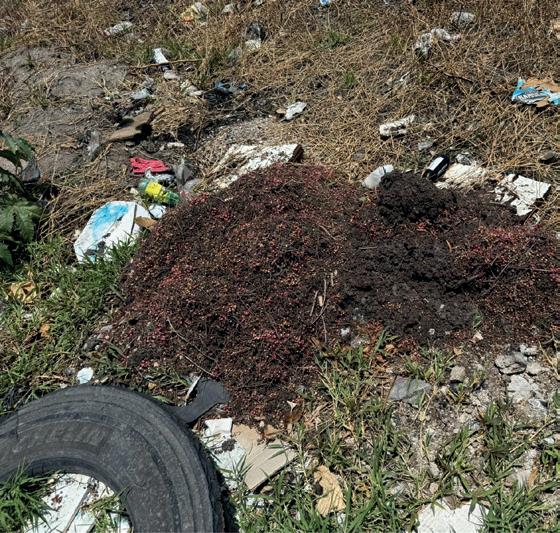
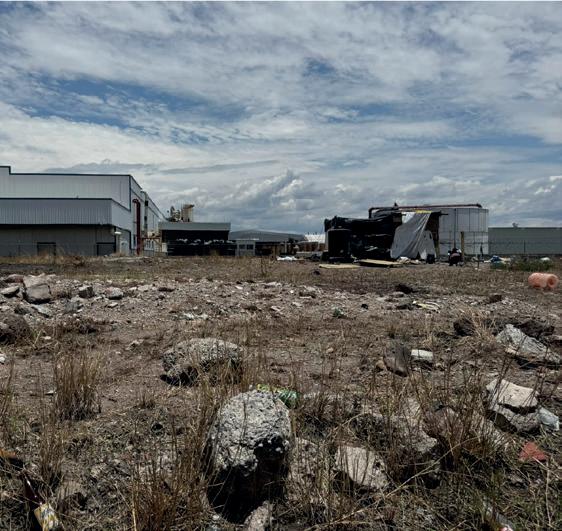
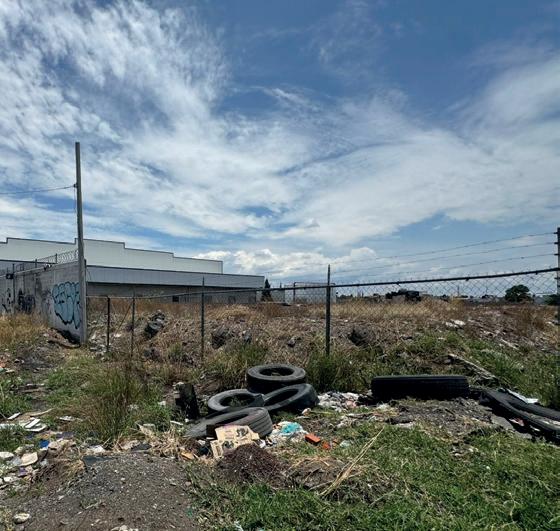

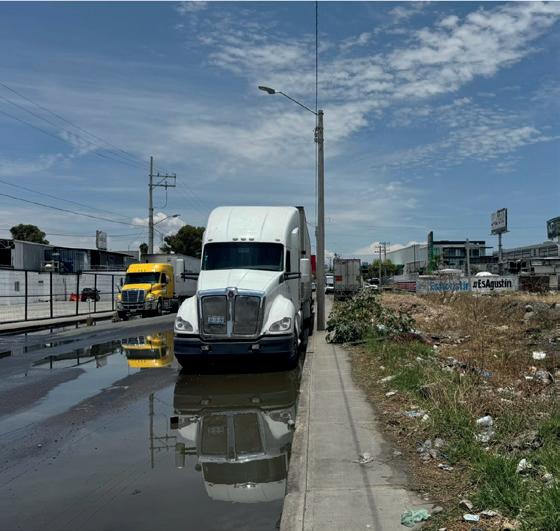


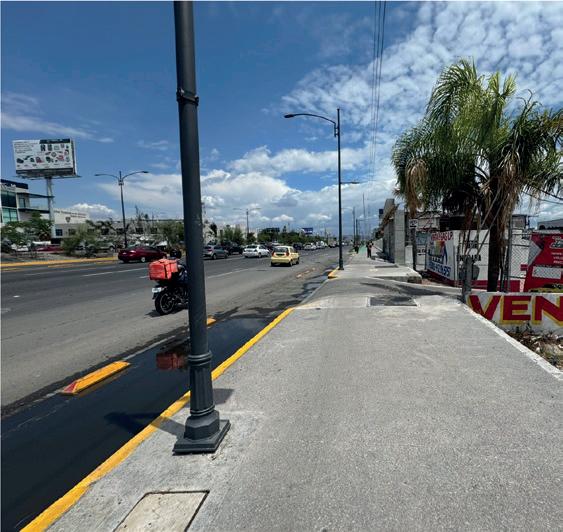

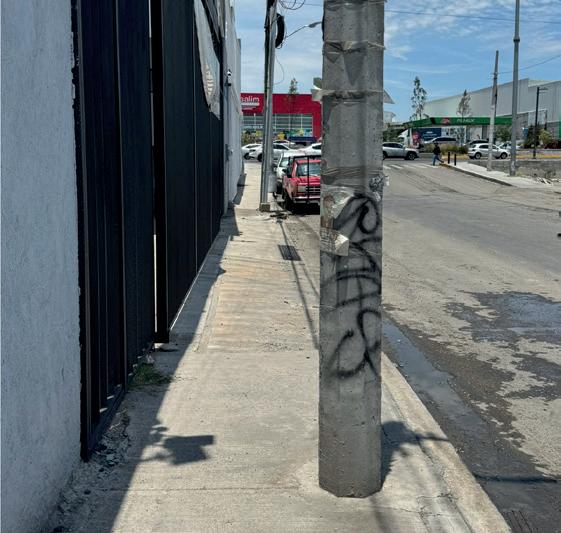
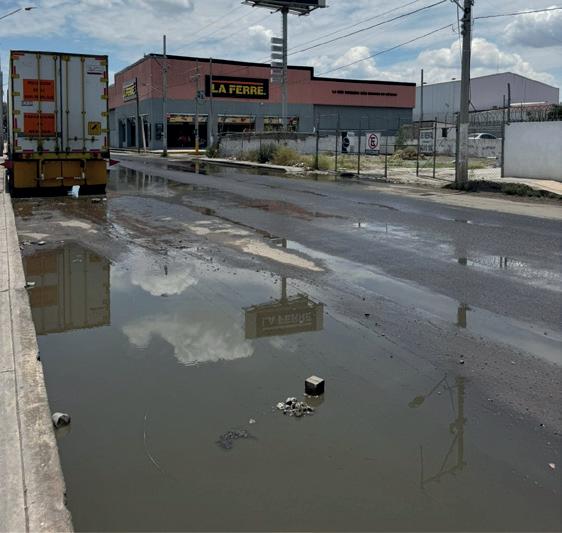


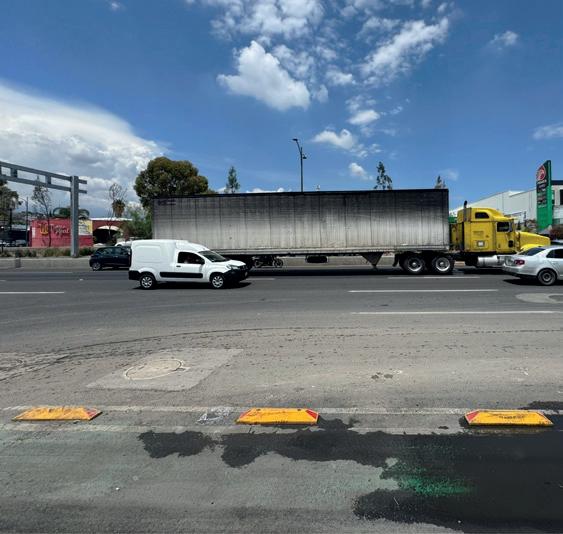









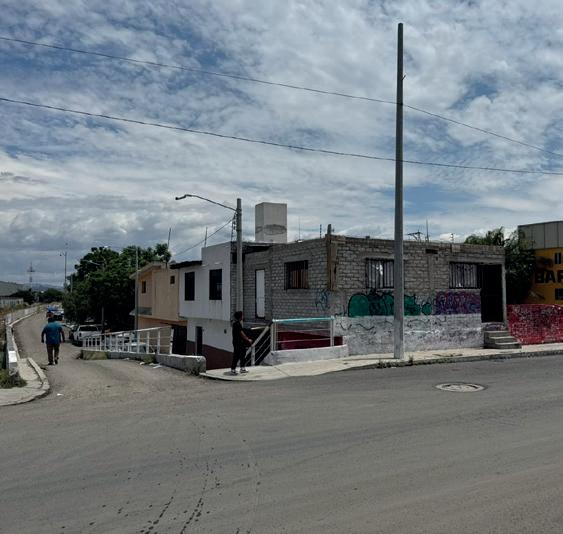


Manifesto and strategies
Strategies used in the project
1.-Transforming urban voids into green, regenerative public spaces that promote interspecies coexistence.
2.-Design infrastructures to enhance agricultural sustainability by minimizing water consumption.
3.-Revive food traditions with adaptable urban farming technologies.
4.-Design spaces that promote healthy eating with fresh, local foods.
7.- Repurpose underutilized infrastructure for circular economy strategies through public debt reactivation.
8.- Create inclusive, accessible spaces addressing local food needs through participatory strategies.
11.- Promote food sovereignty to raise awareness on consumption trends, production processes, and water usage for a cultural shift.
13.- Offer nutritious, affordable food through a community-based self-production and local exchange system.
14.- Integrate rainwater collection, treatment, and storage to reduce water system dependence at community production points.
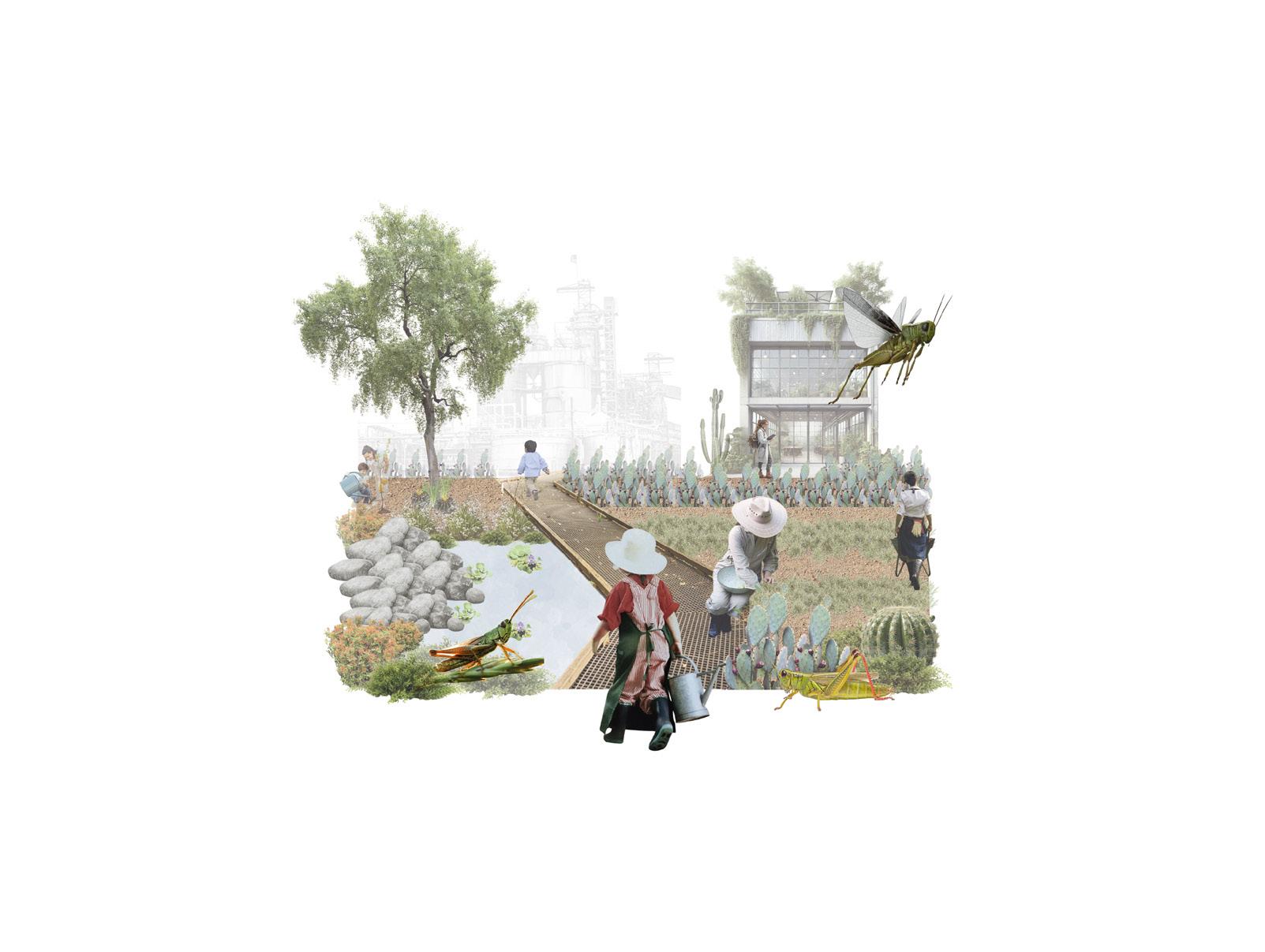



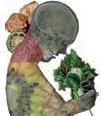
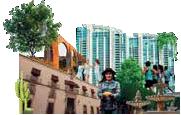

Intentions

-Regenerate and activate an urban void to transform it into a connecting node between the industrial and residential zones, promoting the social, ecological and functional integration of the environment.
-Accept that space is in constant transformation, allowing the design to incorporate the temporal, seasonal and evolutionary as part of its logic.

-Design a walkway and an elevated building that frees up the ground, allowing its use as a permeable public space. Incorporate strategic gutters to redirect rainwater to rain gardens, promoting sustainable water harvesting and management.
-Use elevated, modular and reversible structures that minimize the footprint on the ground and adapt to long-term changes in the environment.
-Recognize the aesthetic and ecological potential of the released soil, integrating native vegetation, rain gardens and trails that raise awareness of local biodiversity.

-To raise awareness of cricket consumption as a sustainable food alternative, highlighting how its production differs significantly from conventional industries in terms of environmental impact, even though its appearance defies traditional expectations of “palatability”.
-Promote low-impact production models (such as cricket breeding) that can be inserted in urban contexts without displacing neighborhood dynamics, favoring circular and local economies.
-Develop educational spaces or devices that provide information on the water cycle, rainwater harvesting, urban agriculture and the benefits of consuming alternative proteins such as crickets.
-Integrate a circular economy approach throughout the process, where resources are reused, waste is minimized and each component of the system actively contributes to the regeneration of the natural environment on site.

-Design with a logic of openness that allows pedestrian, visual and ecological flows between industrial and residential areas, eliminating barriers and reinforcing urban continuity.
-Transform the void into a space of collective meaning, going from being a residual area to become a place with its own identity, where the relationships between the inhabitants and their environment are reconfigured.
The project





5deFebrero
Residential zone connections
Users diagram
Local students: Co-create and use the space.
Industry and SMEs: Support infrastructure and circular economy.
Visiting students: Bring diversity and wider reach.
Universities: Provide knowledge and innovation.
Research centers: Offer technical and environmental support.
Sustainable companies: Supply technologies and workshops.
Residents: Care for and use the space.
Cyclists: Promote green mobility.
Transient people: Need safe and accessible spaces.

Nearby industry and SMEs: -Collaborate in infrastructure and circular economy.


Nearby residents: -They favor daily use and community appropriation.
Local students: -co-create and give educational and cultural life to the space.
Cyclists and people in transit: -sustainable mobility and connectivity.
Researchers: -Technical and academic support for sustainable development.
Producers (crops and crickets): -Knowledge in cultivation and soil management.
Visiting students: -Spreading the project to other áreas.
Transient people: -Provide constant visibility


Degraded
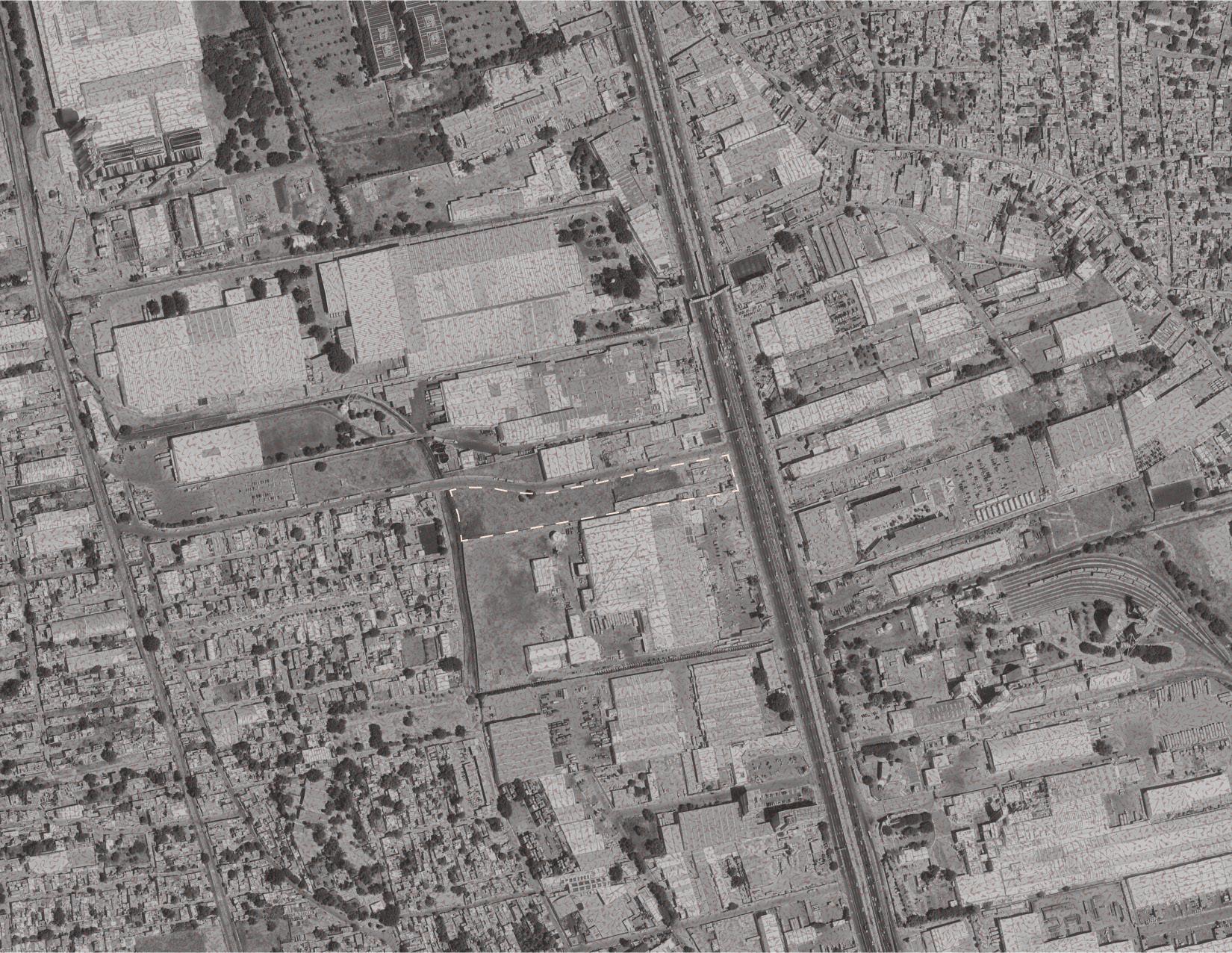


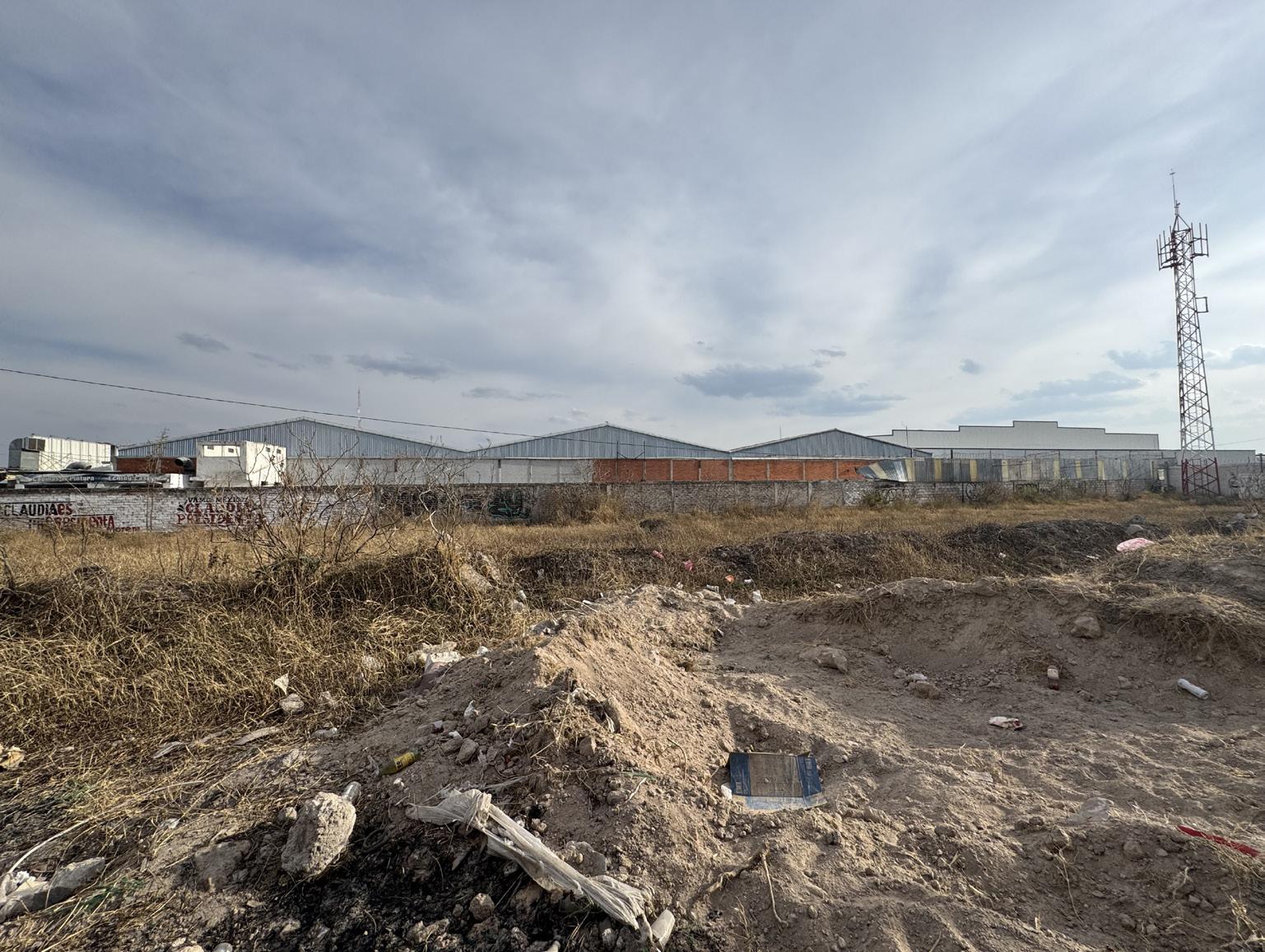
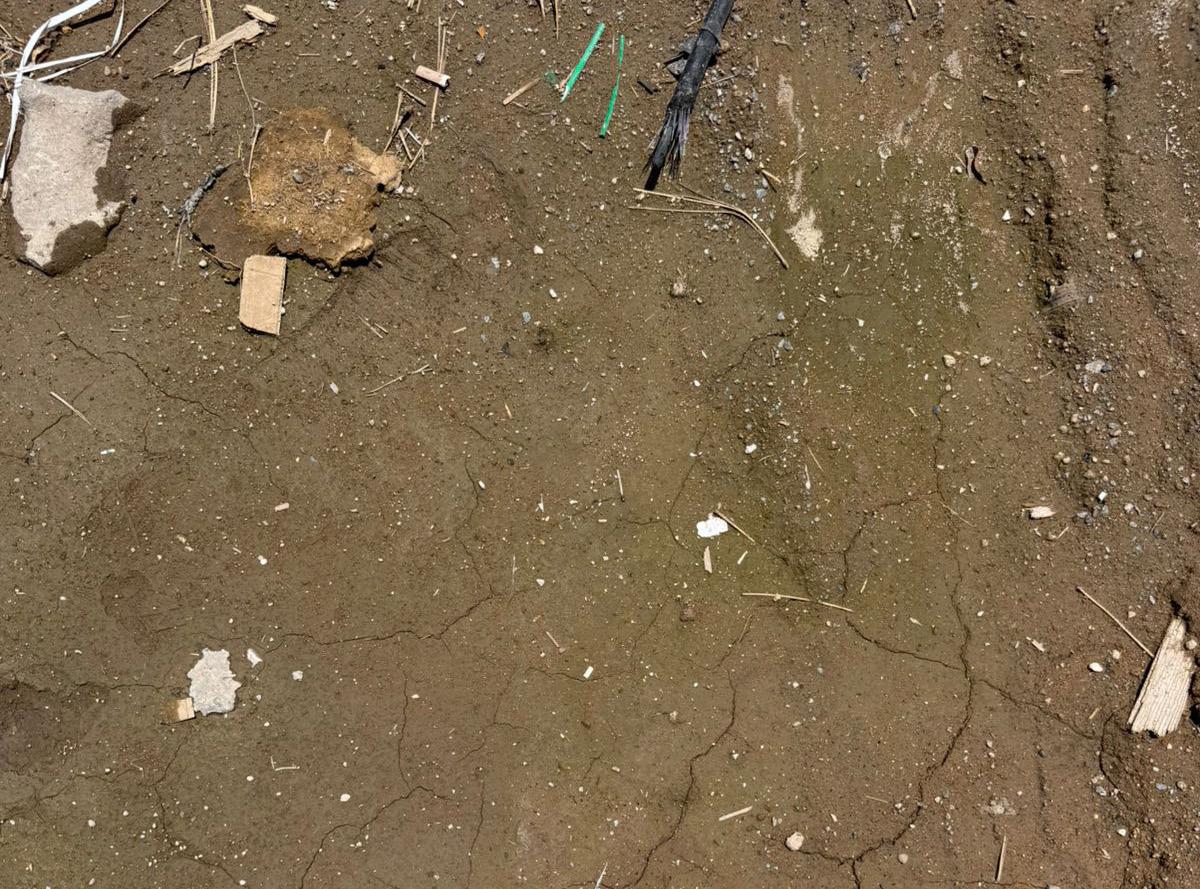
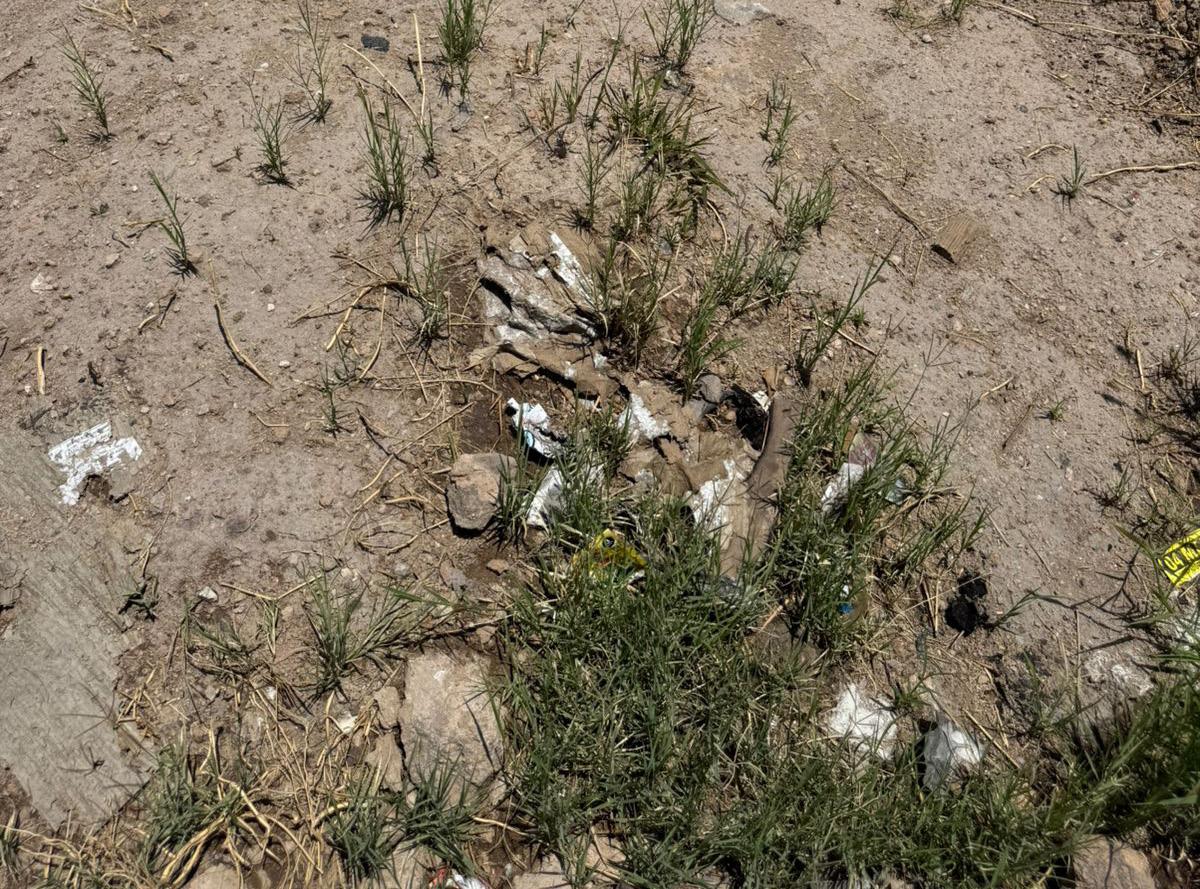
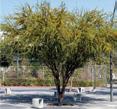

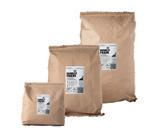








Huizache

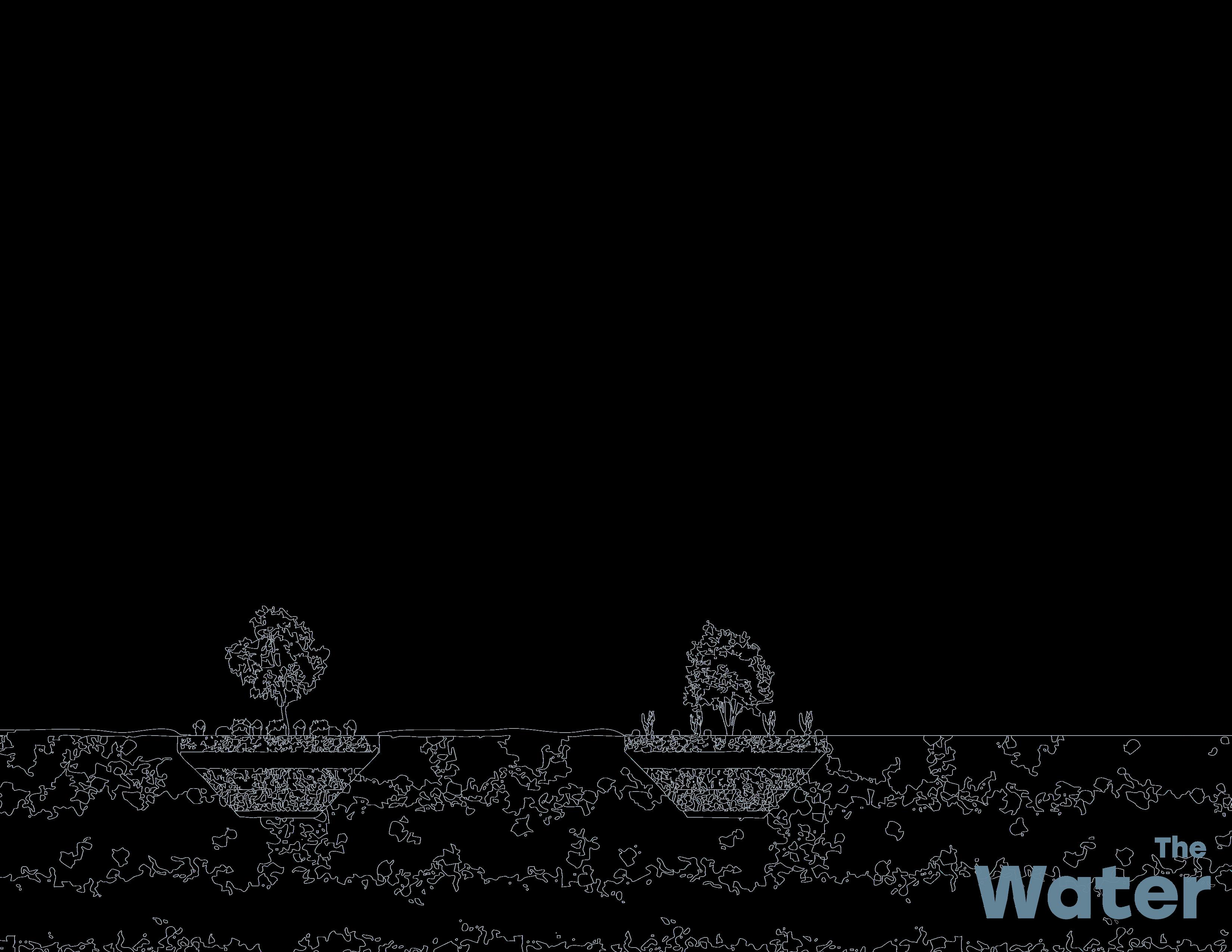

Flood zones
Drainage ditch Level curves
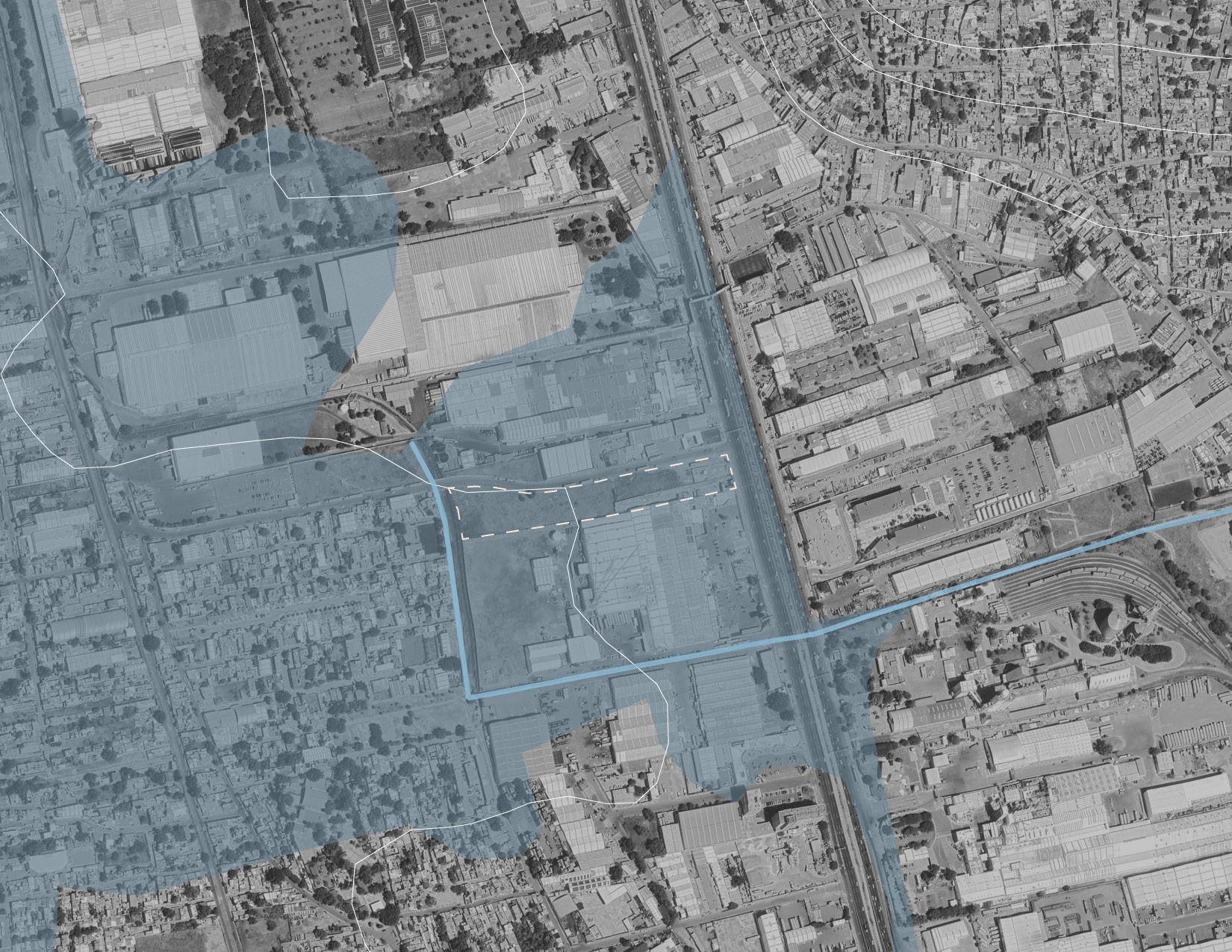
Water harvesting strategies


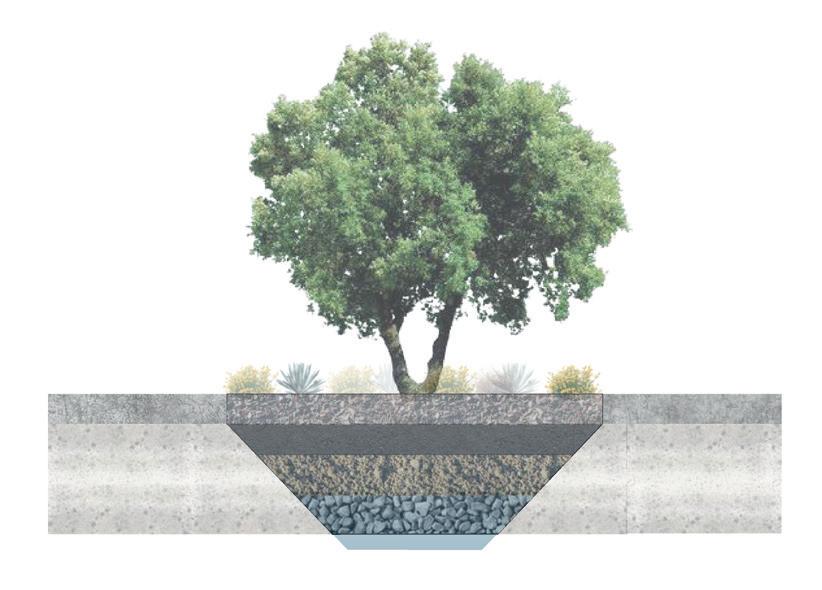
Rainwater harvesting through sloping roof (butterfly roof)
Rainwater harvesting and filtration through rain gardens
Redirecting water to rain gardens by changing ground levels
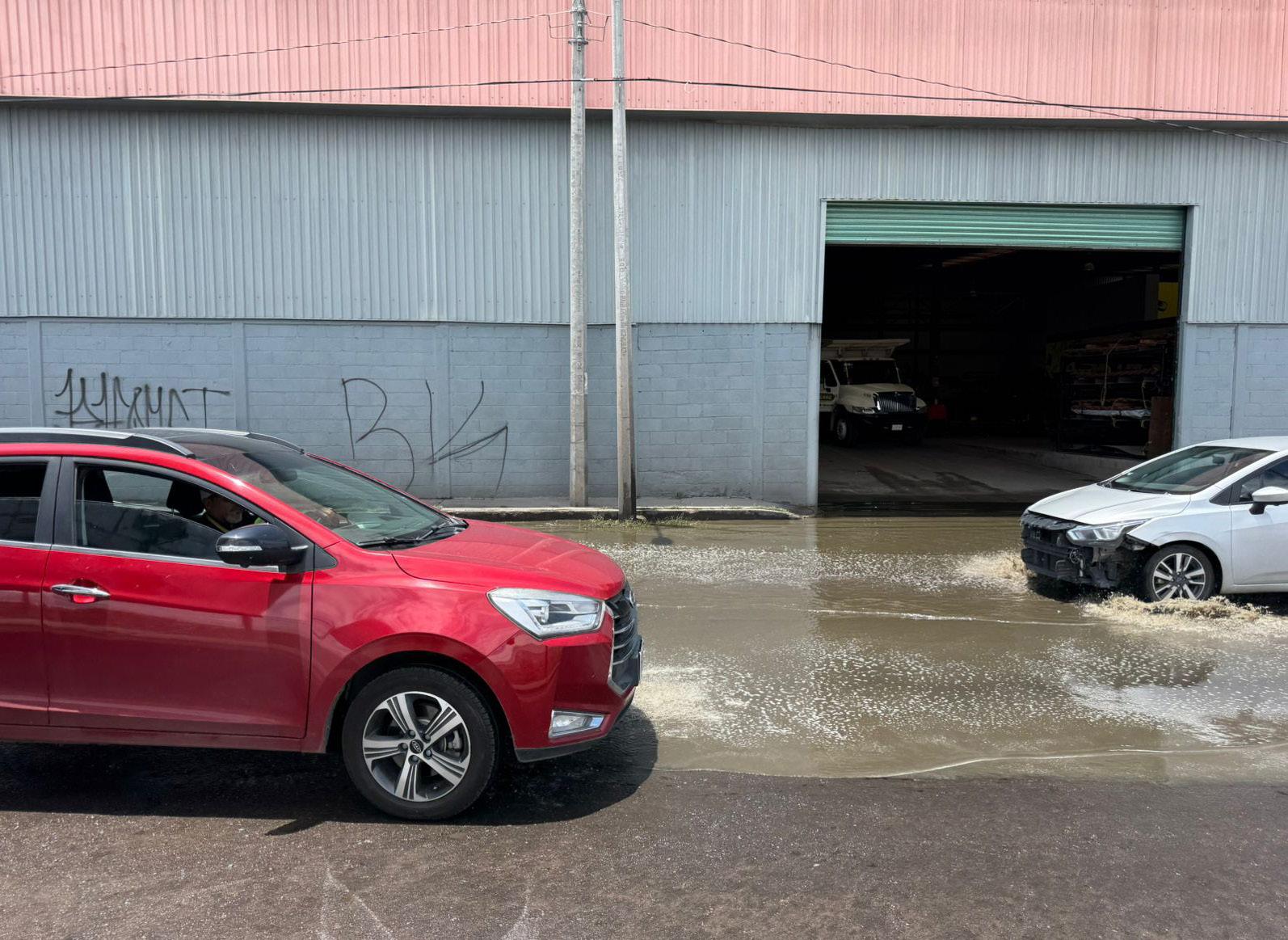

Water catchment
Symbology
Rain garden
Wetland
Cistern
Elevated pathways
Displacement water pavement
Water displacement roofs
Water displacement through gutters
Filters



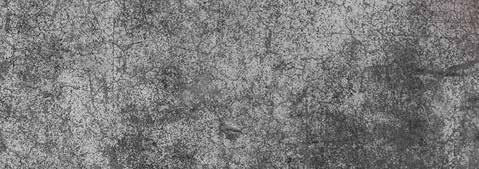

















Capa de mantillo (mulch)
Capa de suelo enriquecido
Capa de arena
Capa de grava

Symbology
Cistern
Filters








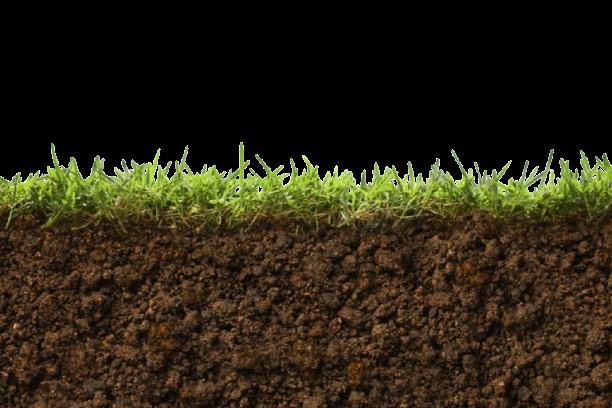
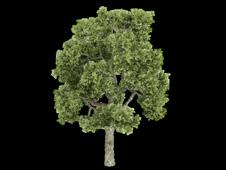

















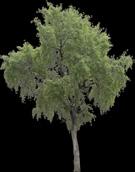
























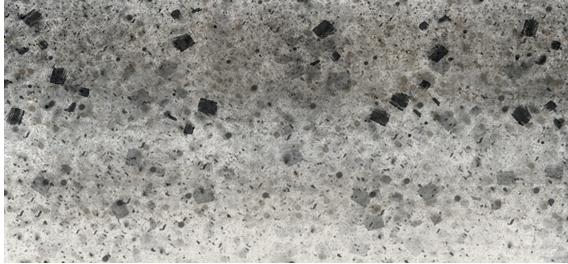

Cistern
Cistern of 180,000L
Cistern of 180,000L Filters
Rainwater harvesting calculation
Total Infiltration(L/año) Useful uptake 30%




Raigarden
Raigarden
Raigarden
Wetland
Cistern
Calculo cisterna:
C1: V anual ajustado = 109,089L + 96,000L = 205,689L
V cisterna = 205,689LX0.75X1.15 = 177,915L
C1 = 180,000L
C2: V anual ajustado = 77,211L + 124,200L = 201,411L
V cisterna = 201,411LX0.75X1.15 = 173,718L
C1 = 180,000L
C1
C2
Rainwater

Scale 1:100
Drip irrigation scheme
Symbology



























































































































































































































































































































































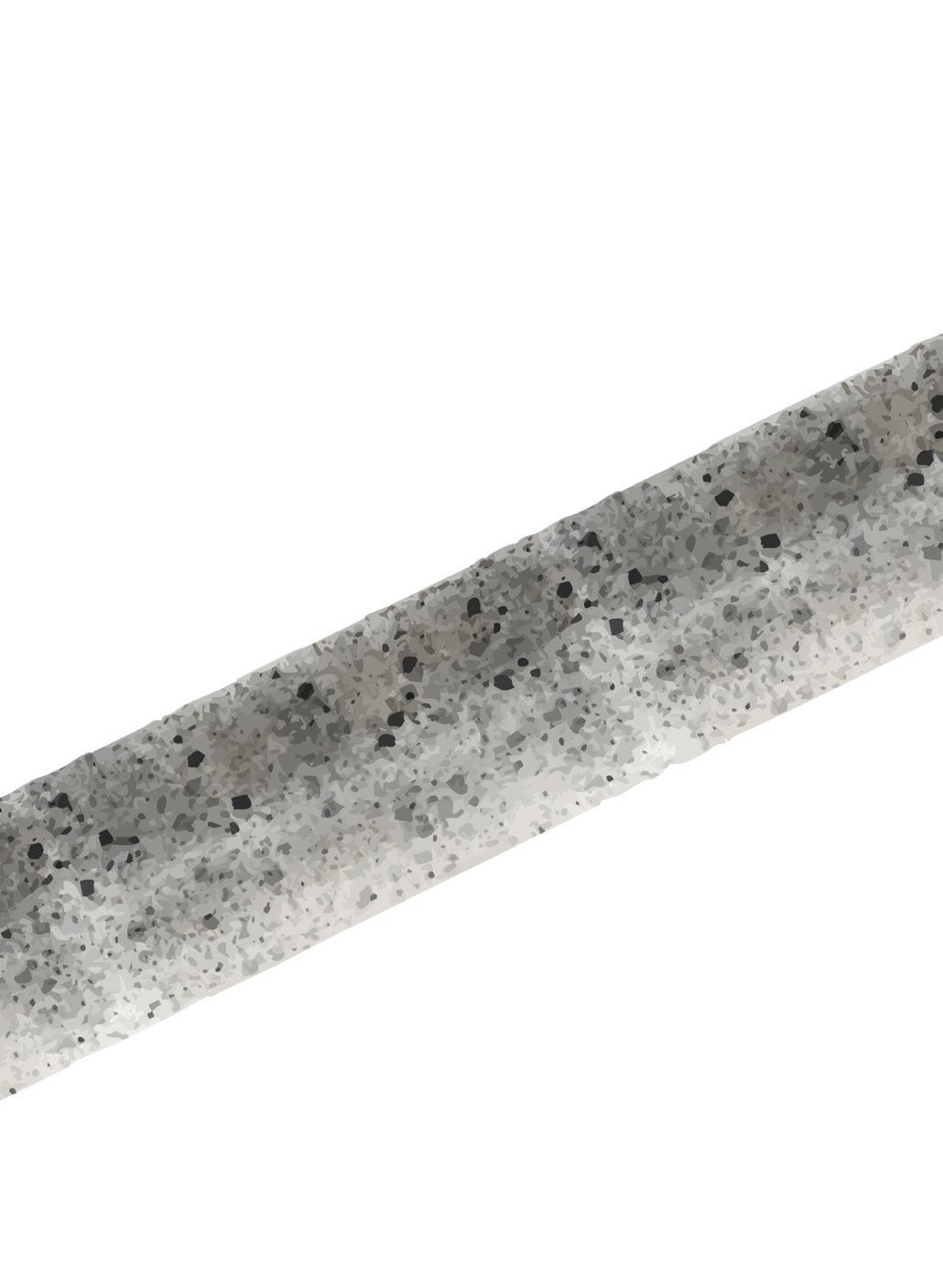










































































Cistern irrigation tapes main pipe
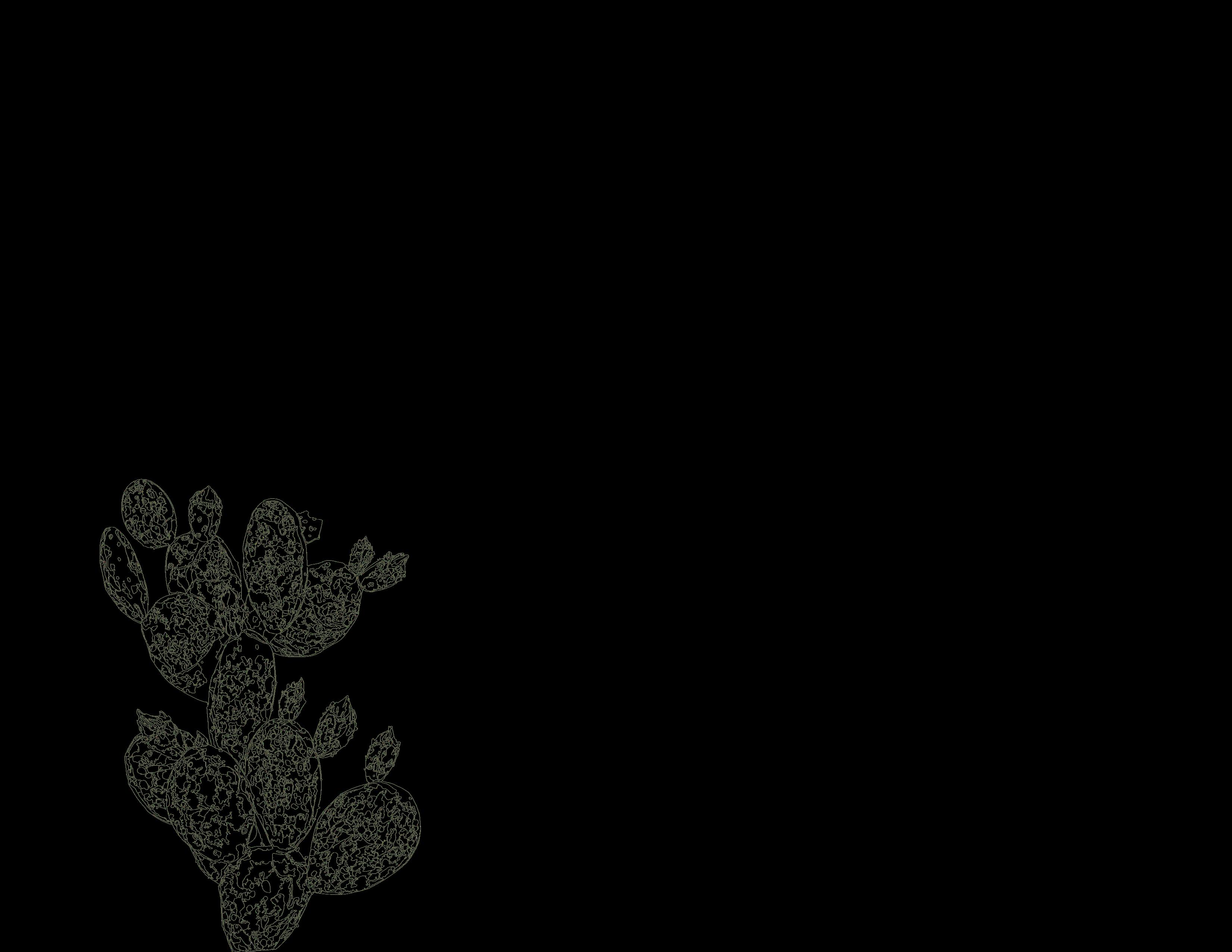

Insect based food production
Insect farming
• Growth

• Care
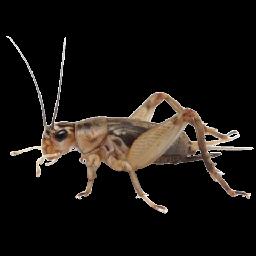


Tecnology & investigation
• Process efficiency
• Environment conditioning
• Monitoring
• Constant improvement

Food source
• Foodwaste
• Cereals
• Crop

Food preparation
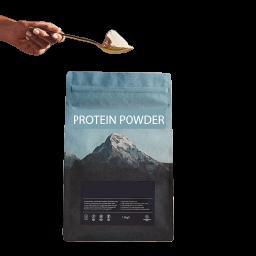
• Drying
• Miling




Consumers
• Humans
• Pets
• Fish
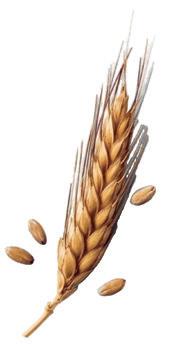

• Nutrient additives

• Small Livestock
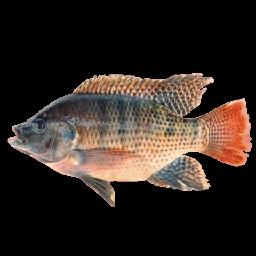

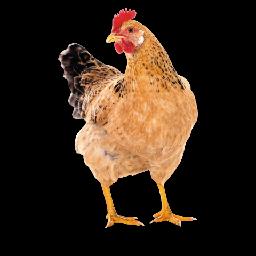

Nutritional and environmental data


= 1kg of food required to convert into 1kg of biomass (body weight)



= 1000 liters of water required to produce 1kg of food Area required for growth

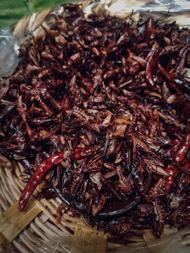
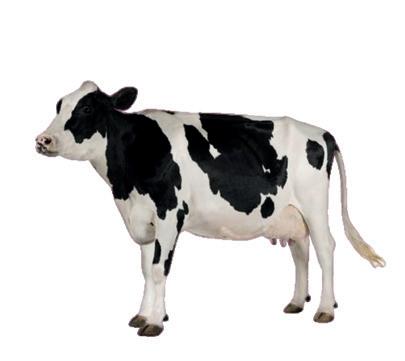



















































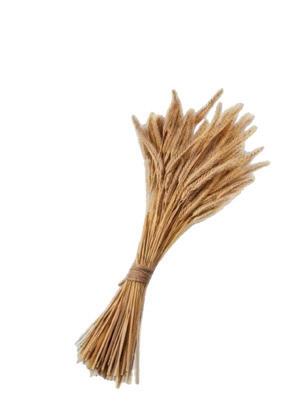











Nutritional value per 100g





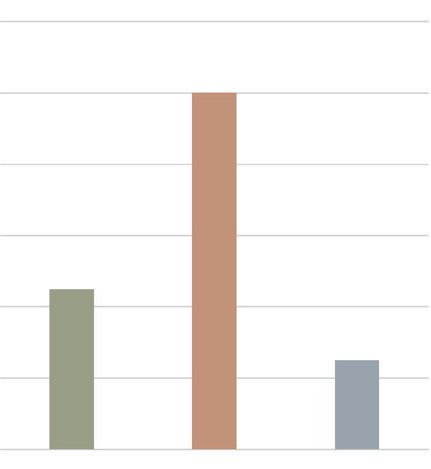







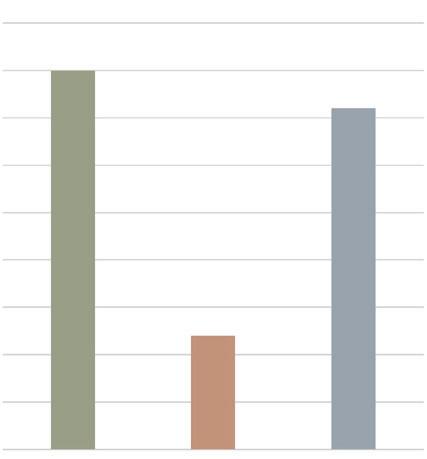

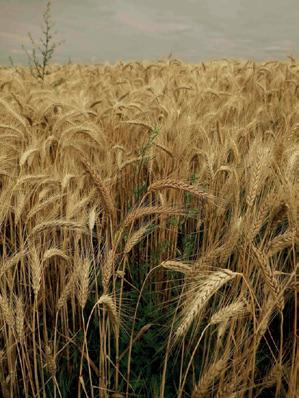



Cricket production
Beginning of the process


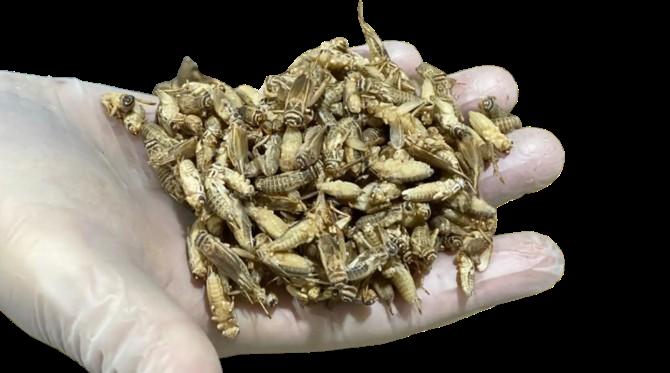
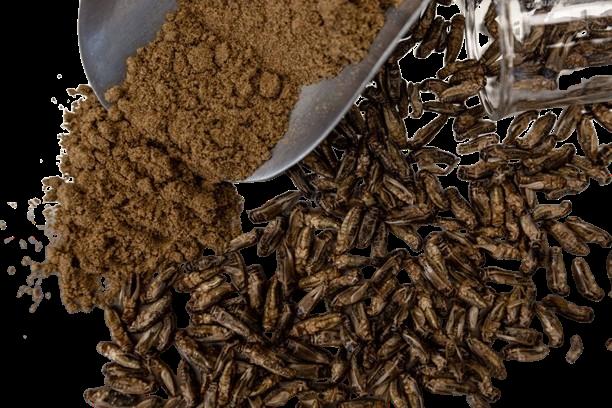



Grinding
Packaging and storage
Cricket breeding
Harvesting and cleaning
Drying or dehydration
Screening and quality control end of the process
Production cycle


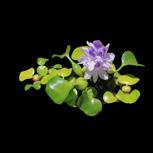

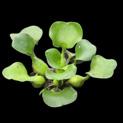


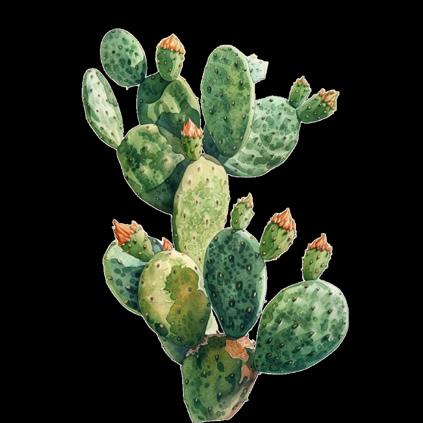


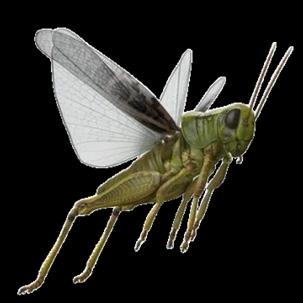
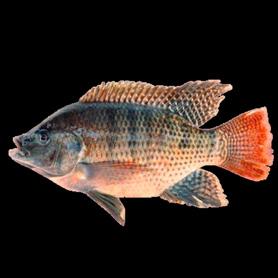



Production quantity


Nutritional information
These foods were chosen for their high nutritional value, low water consumption and adaptability to Querétaro’s climate. The crops are used as food for the crickets, which are processed in drying machines to sell the whole insect. We can also produce cricket powder with further processing in the milling machine.

Nutritional information

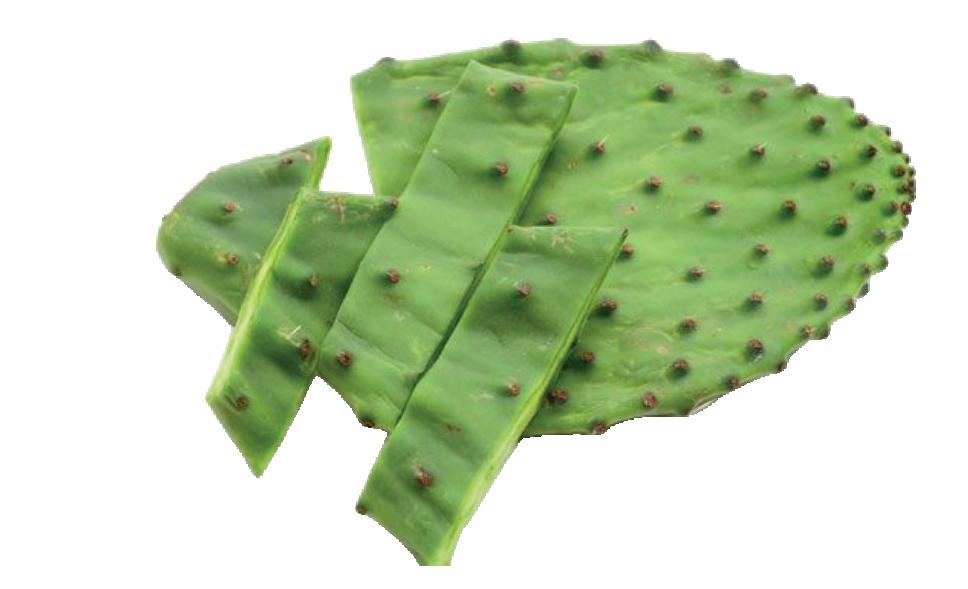



Plot maximum average of 20 x 10.
Each plot consists of 5 cultivation beds, containing four rows (furrows). Fifty nopales or lentil plants are harvested per furrow.
Since lentil planting is similar to nopal planting, the same technique was implemented for both crops.
The plots are designed with their maximum size, however some of the proposed furrows have smaller sizes for better functioning within the site.

Crops are rotated after cultivation to avoid the incidence of pests and diseases both in the soil and in the remains of vegetative material.


















Source:
https://tierrafertil.com.mx/2023/02/15/como-sembrar-una-hectarea-de-nopal-forrajero-sin-espinas/. by. Amado Vázquez Martínez https://elhuerto20.wordpress.com/category/cultivo-de-legumbres/lentejas/. “El huerto 2.0”
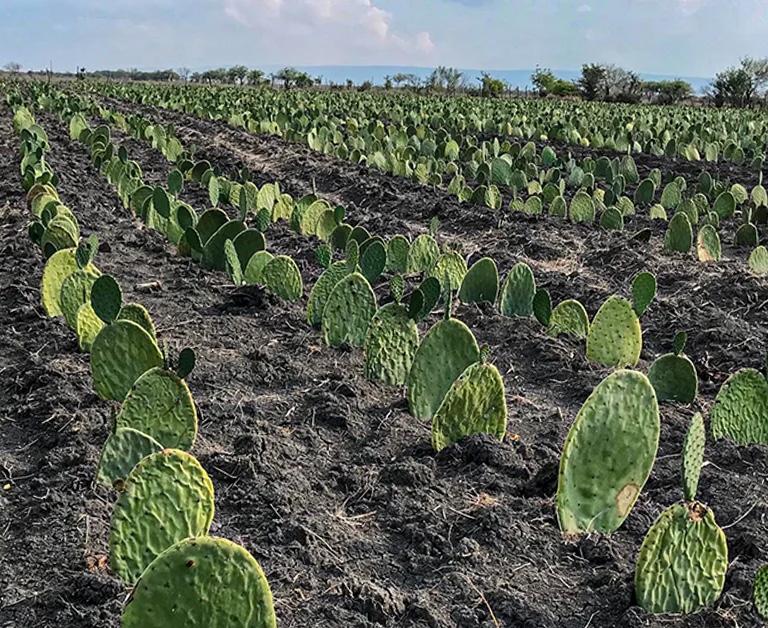
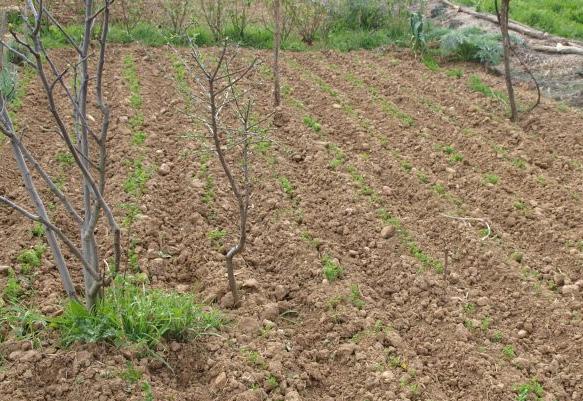
Cultivation phases Water catchment
Symbology
Phase 1.1 (Approx. 3 - 5 years)
Phase 1.2
Phase 1,3
Plot / crop
Building
Parking
Crop 4241 m2
Amount of nopales per 2120m2: 10,600.
Amount of lentils per 2120m2: production of 105 per m2 are 222,600.
PLANTING INFORMATION
Known as: Nopal, fig tree, palera, cactus pear, penca, tuna, prickly pear, prickly pear and fig.
Site selection
To be able to implement rainwater harvesting techniques.
Site protection to avoid plant destruction. Easy access to the plants.
Soil preparation
Removing weeds and perennial shrubs
Soil leveling Rainwater management
Plantation design
Beds
3 - 4 strands of stalks in each bed
Planting time
Tender shoots emerge 2-3 weeks after planting.
Fertilizers
Chemical fertilizers are used only in years of above average rainfall.
Fertilizers from local sources, as an option frass will be implemented. Use animal manure before planting. 20 ton/ha of manure every two years.
Pest and disease management:
Selective pruning can help keep the plantation healthy.
Climate / Temperature
Range from 6 to 36° C
Harvest
To harvest, they are separated from a single cut at the base of the plant using a knife. During the first year, 2 to 4 stalks can be harvested per plant, and the plant is left with only two stalks.
Optimum 5 and 19°C Ideal
Irrigation:
Planting is done in dry soil, 15 days after planting irrigation can be started. The frequency of irrigation and the amount of water to be applied will be done throughout the year, in previously selected stages. The total irrigation lamina will be 200 mm. Considering a water requirement of 50 m3 every 9 days. In the winter period, irrigation is done every 20 days with 40 liters of water per square meter of land.
Storage
Fresh stalks should be stored in a dry and shaded place. They can be piled up. Direct sunlight causes deformation of the stalk. They can be stored for up to six months without appreciable loss.
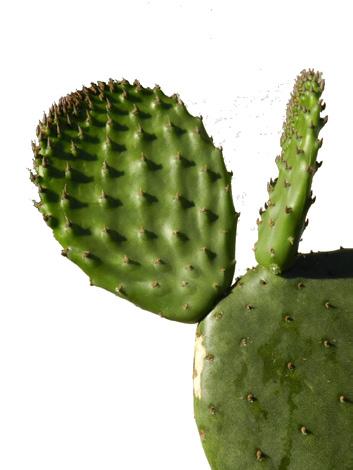

PLANTING INFORMATION
Lentil
Site selection
Well-drained soils
Soils: sandy, chalky, deep with good drainage. Very fertile soil is not recommended (as the plant may tend to produce more vegetation than grain).
Seeds
Use certified seeds
They need oxygen to germinate
Characteristics:
Physical purity, Phytosanitary quality, Genetic quality.
hectare large seeds
hectare small seeds
Sowing date
April and May
Can tolerate light frost
Avoid soil moisture
Fertilizers
It is recommended to apply a fungicide treatment to the seeds when planting lentils.
Ideal soil pH
30kg 60kg
Watering
At the beginning of the vegetative period, it should be watered once or twice a week, after which the frequency of watering should be increased..
Important facts:
Do not grow lentils in the same field for consecutive years, as you may carry the risk of infection by Ascochyta late blight.
Seeding equipment
Pneumatic seeder (may damage dry seeds) Use belt conveyors to move larger seeds.
Between 5.5 and 9
Storage
Lentils should be dried in a cool, dry place, protected from direct light and moisture. They can be stored in airtight glass jars or paper bags.

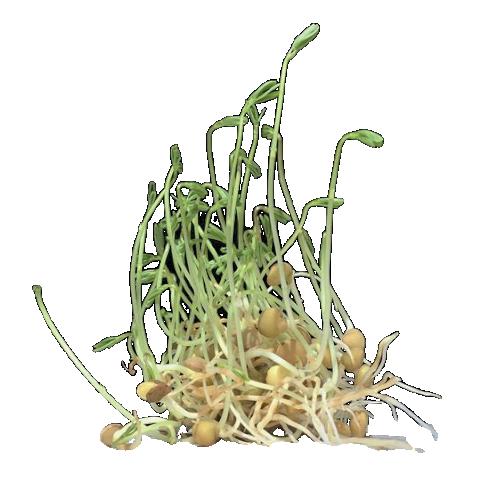
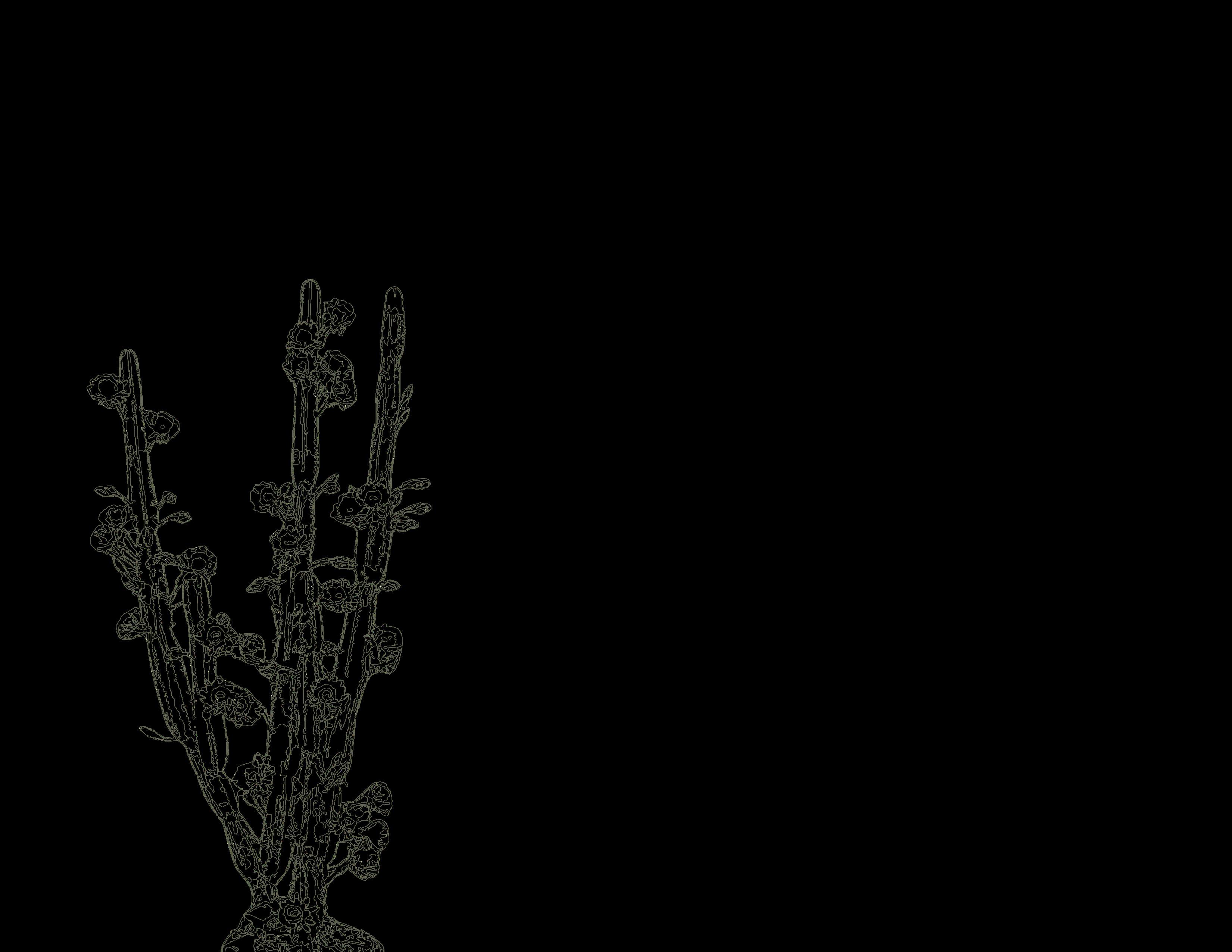

Cactaceae
Scale: 1:25
They serve as physical barriers. In some cases, they are also aromatic.
Trees
Scale: 1:100
They provide shade and thermal comfort to the site.
Bushes
Scale: 1:75
They serve as physical and visual barriers. In some cases, they are also aromatic.

Coryphantha erecta
Coryphantha radians
Reina de la Noche

Palo Dulce
Huizache
Palo Verde
Manzanilla Carlowrightia parviflora
Trompetilla Romero Tronadora Estafiate
Hierba de la Virgen
Plant palette rain garden

Trees
Scale 1:100
They provide shade and thermal comfort to the site, while filtering water, retaining and improving the soil.
Bushes
Scale 1:50
Each one can filter water, retain soil, improve soil quality, and/or control soil erosion. They are also ornamental.
Escobillo
Lluvia de Oro

Eclipta Prostrata Escobilla Polyngonum Punctatum Berro
Mecardonia-Procumbens Pasto de escobita Maguey Pencon
Vegetation catalog
Naturalized exotic plant.
Hydric requirements
Landscape vegetation
Rain garden vegetation


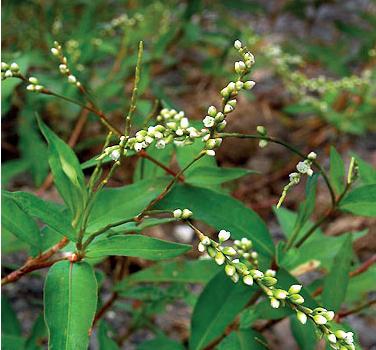
wet soils
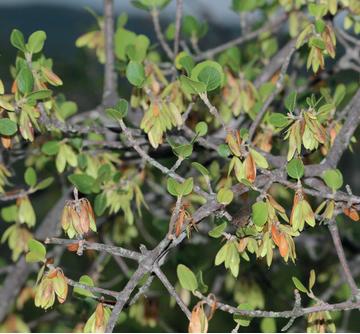
water
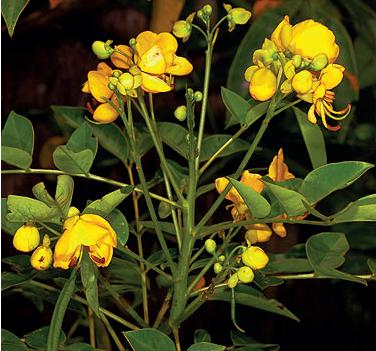

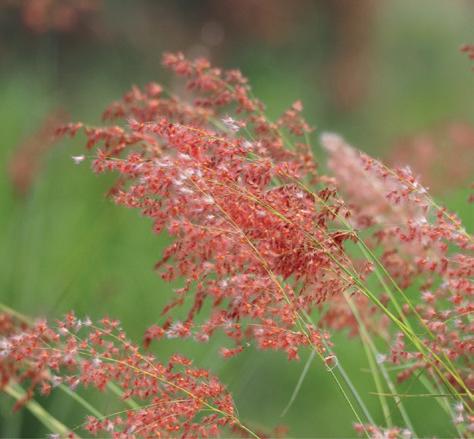
cover aquatic grass grows in flooded soils filters water


Escobilla
Berro
Lluvia de oro
Escobillo
Pasto de escobita Maguey pencon
polyngonum punctatum
dalea bicolor humb
eclipta prostrata
rorippa nasturtium aquaticum
laburnum anagyroides
fraxinus dubia
melinis repens
filifera
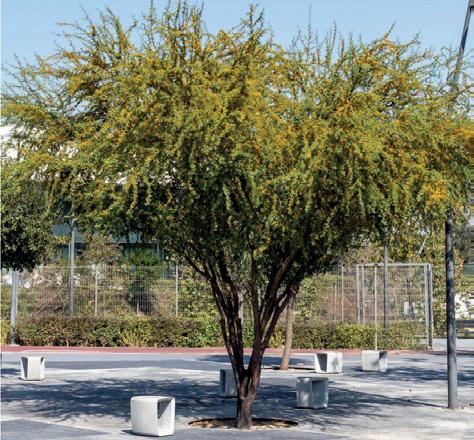
Huizache
acacia pennatula
tree prevents soil erosion improves soil fertility low maintenance



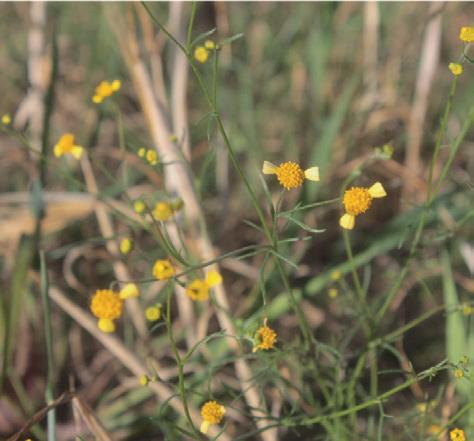
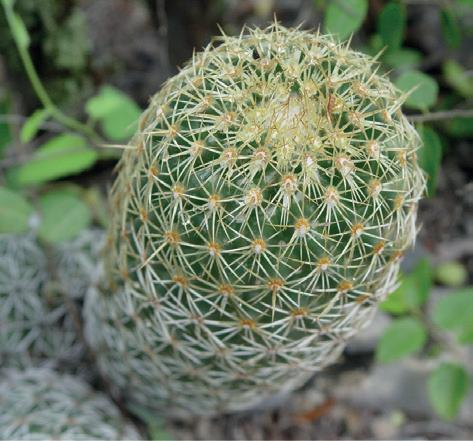
carlowrightia parviflora coryphantha erecta coryphantha
bush improves soil filters water found on roadsides

cactaceae
warm and dry season ornamental filters water

tree improves soils filters water provides shade prevents soil erosion
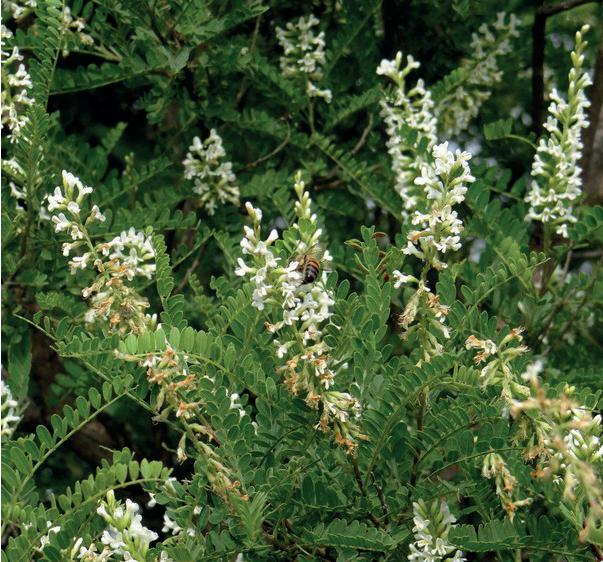
bush improves soils improves soil fertility retains soil aromatic

tree
caducifoliate improves soils filters water provides shade
bush ornamental filters water

bush filters water
ornamental improves soils

bush retains soil
ornamental improves soils

bush
ornamental improves soils aromatic
bush perennial plant Improves soils Improves soils filters water
cactaceae
ornamental retains soil aromatic
cactaceae low maintenance retains soil ornamental
Palo verde Estafiate Tronadora Hierba virgen
schkuhria schkuhrioides thell
bouvardia ternifolia peinocereus serpentinus salvia rosmarinus
eysenhardita plystachya
parkinsonia aculeata artemisia ludoviciana tecoma stans
radians
justicia spicigera
Biznaga de cuernos Manzanilla
Palo dulce Romero silvestre Trompetilla
Reina de la noche
Vegetation planting
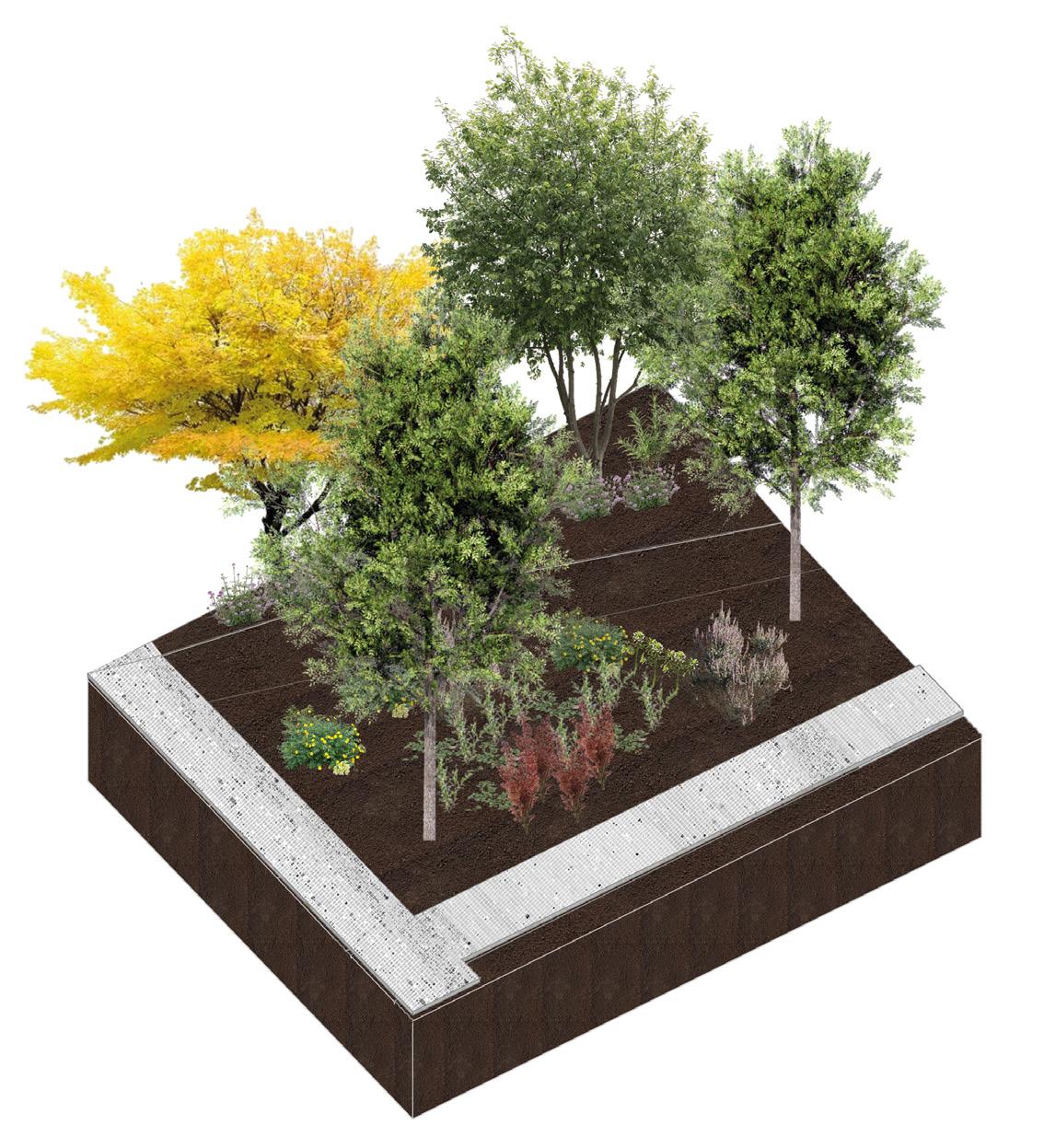

Carlowrightia parviflora


Production building program
Our main intentions are to instill confidence and allow total visibility of the processes involved in the production of crickets, intertwining technique with clarity. The building is organized with a linear outline that simply guides each stage of the production process, as if everything flowed naturally. This awareness is also reflected in its structure: it rises 1.5 meters above the ground, almost floating, so as not to interrupt the life that takes place below, allowing the earth to breathe and the natural to continue its course.
Spaces
1. Preparation of insect food
2. larvae hatchery
3. cricket hatchery
4. separation of crickets and waste
5. composting
6. research laboratories
7. Insect preparation
8. insect drying
9. insect milling and packaging
10.finished product storage
11. administrative offices
12. rest area / canteen for workers
13. Dressing rooms for workers
14. Tool storage for cultivation
15. bathrooms for workers
16. public restrooms
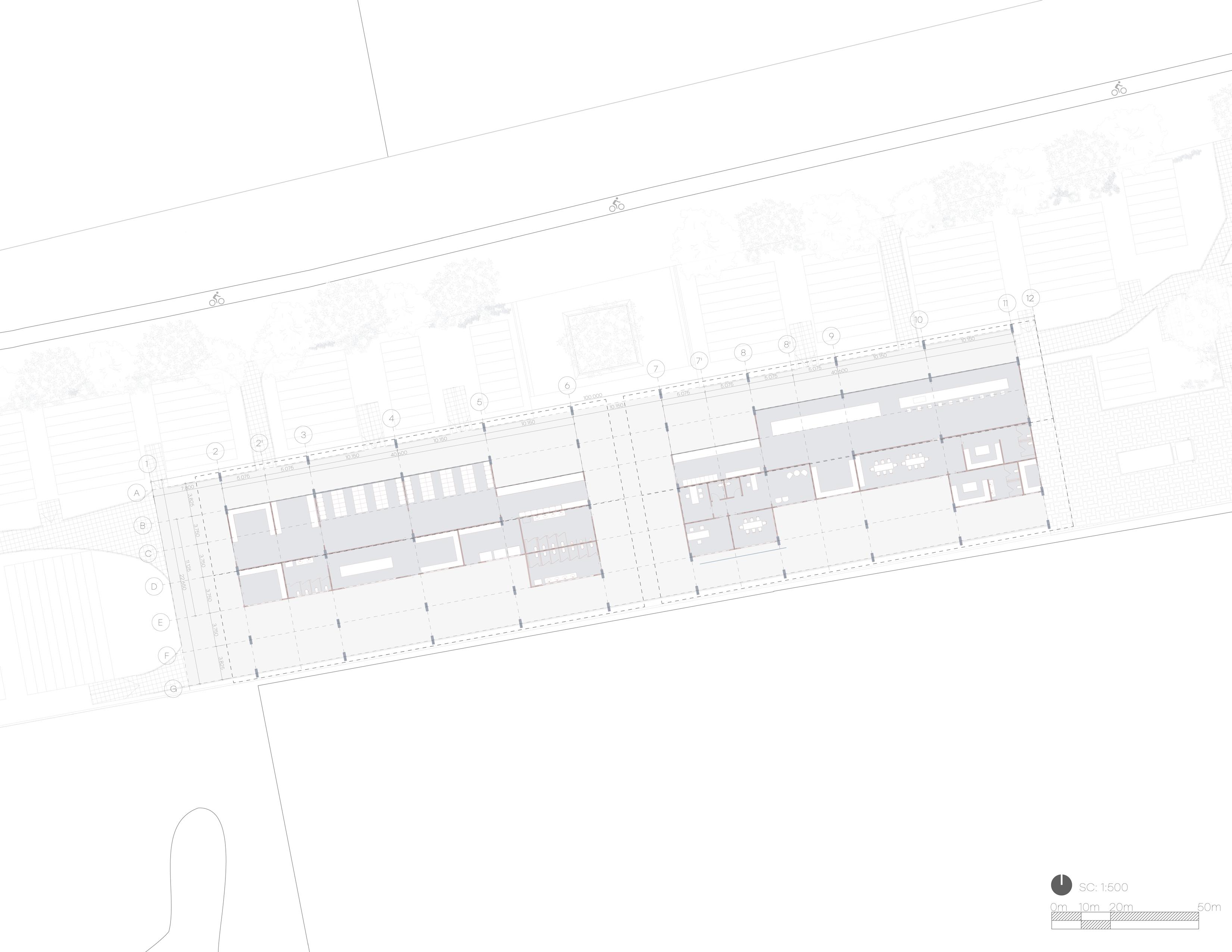
Longitudinal section G-G’


Cross section H-H’


Scale: 1:1400
Axonometric structures

Facade
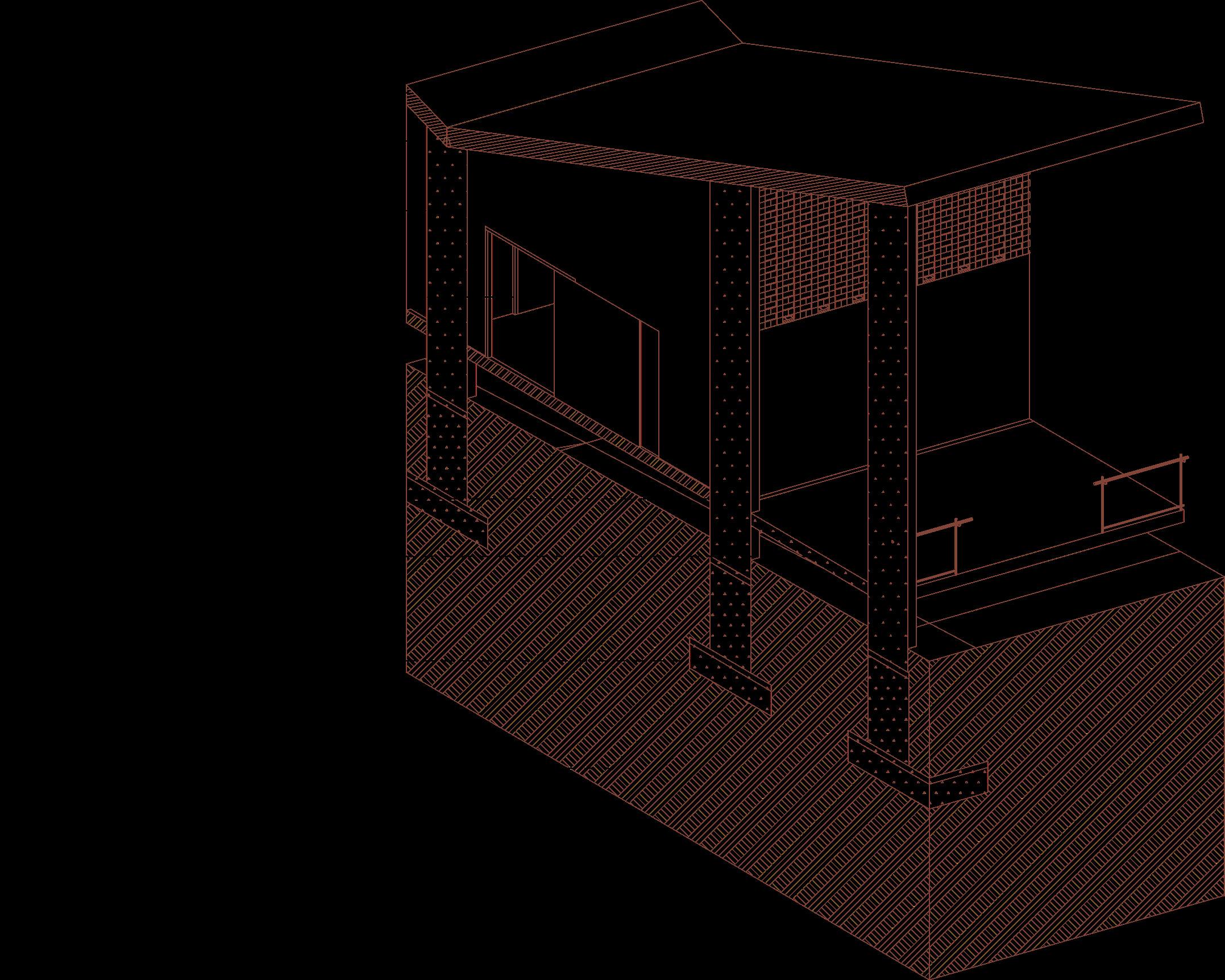
Facade cutting 2
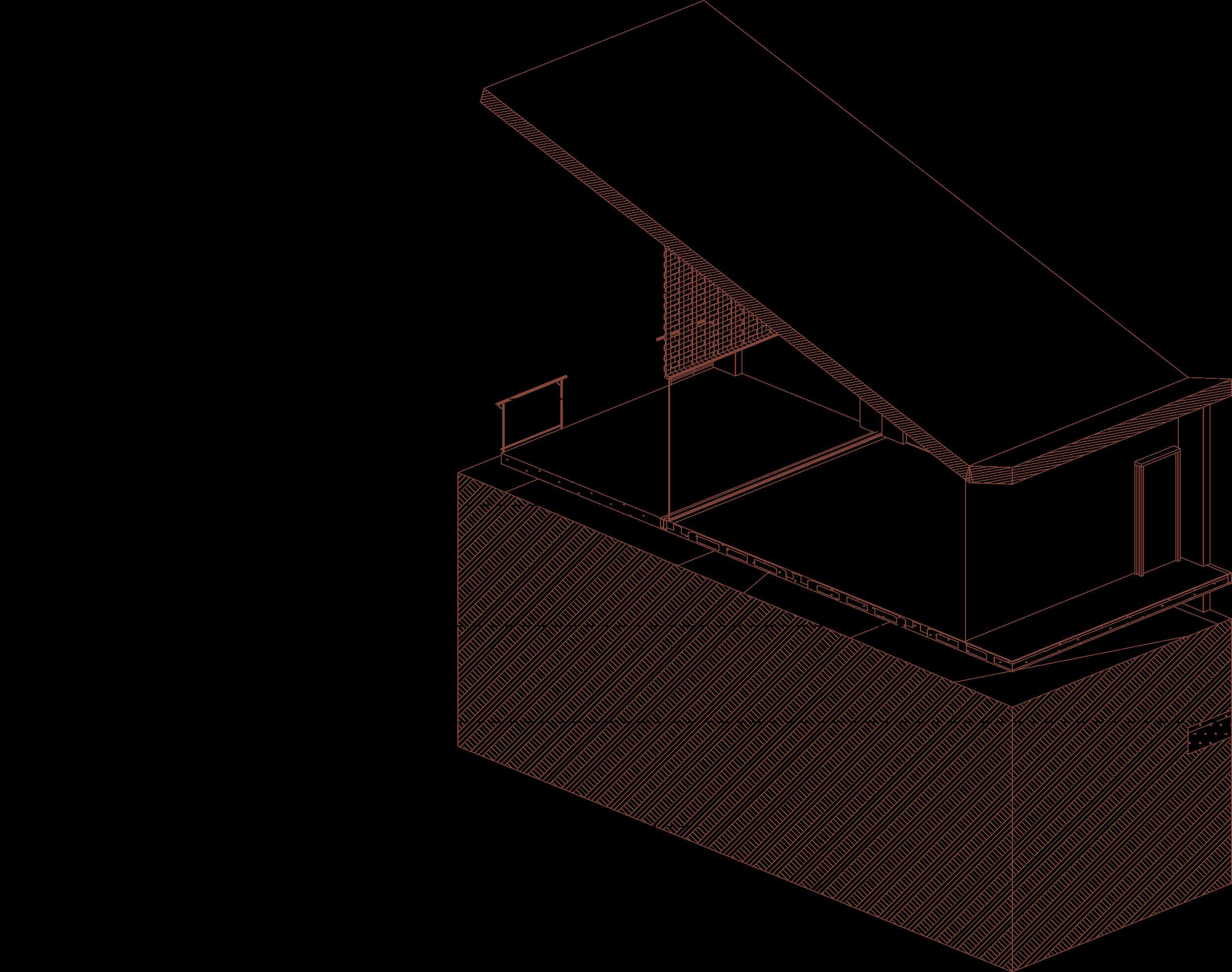
Facade cutting 3

Scale: 1:50
Scale: 1:50
Cut beam section
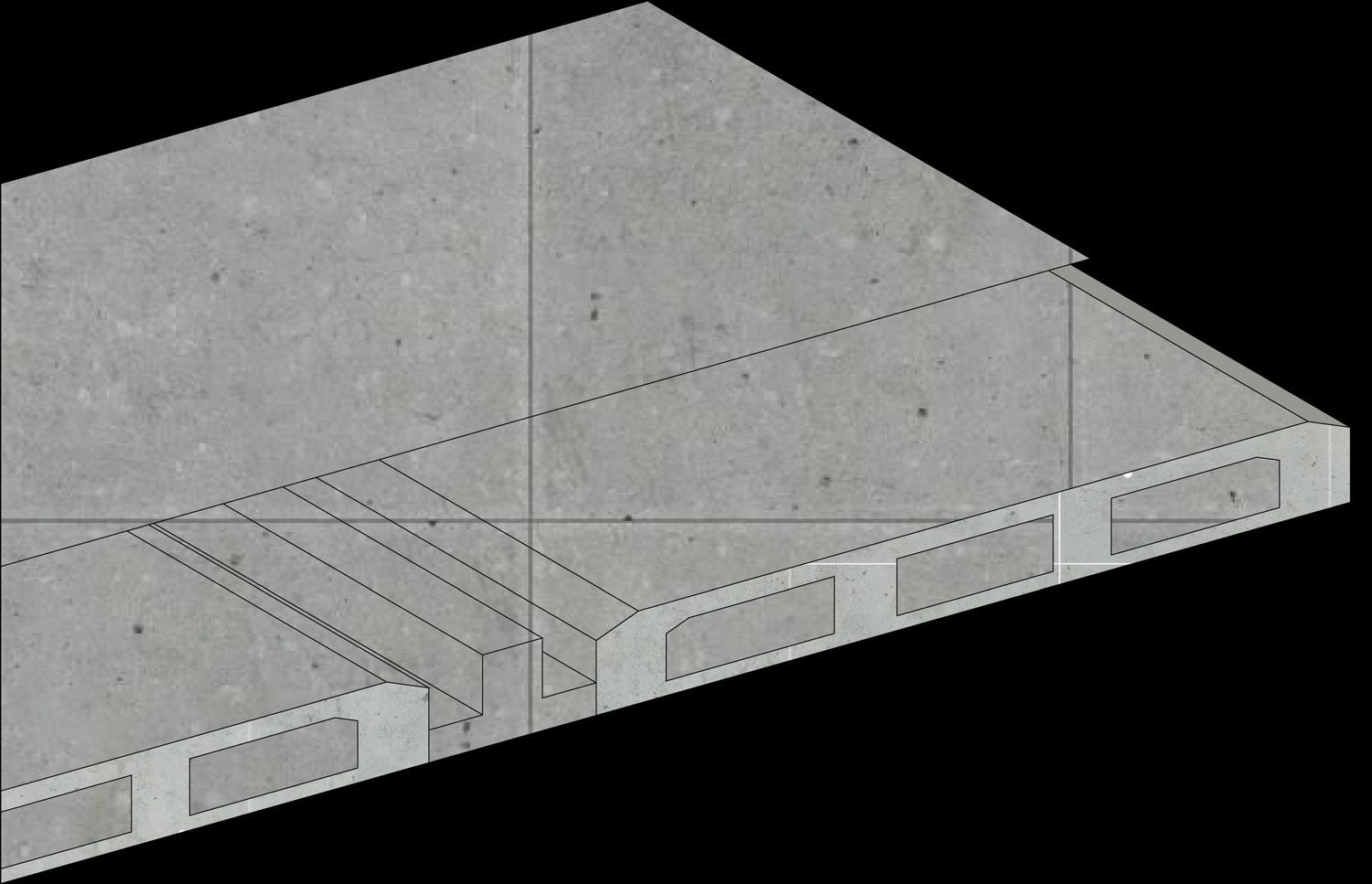



Foundation cutting
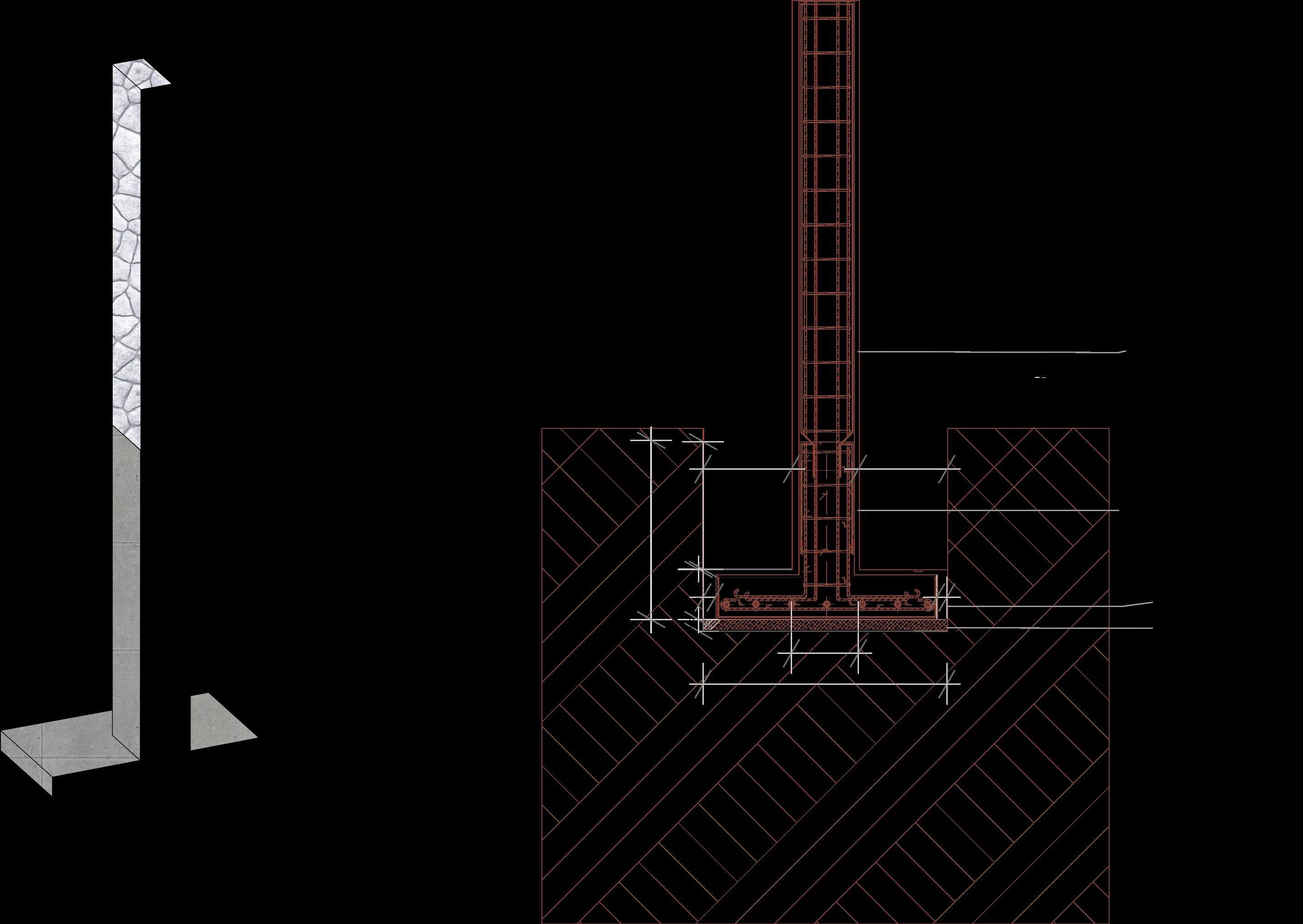
Commercial building
In this project, we implemented a modular space distribution. In this way, if the buildings change their use, their structure can be reused.
The commercial building has 4 commercial spaces that can have different uses; 2 large spaces of 72.15 m2 (examples: sale of products, consulting rooms/offices, coffee shop/small restaurant) and 2 small spaces of 27.5 m2 (examples: sale of goods, barber shop/hairdresser/beauty shop, ice cream shop/small coffee shop). The second floor has 2 equipment areas, which can be used for different purposes (examples: laboratory/research area, consulting/office, meeting rooms, sale of goods, workshops/sports classes).
SC: 1:200

Longitudinal section J-J

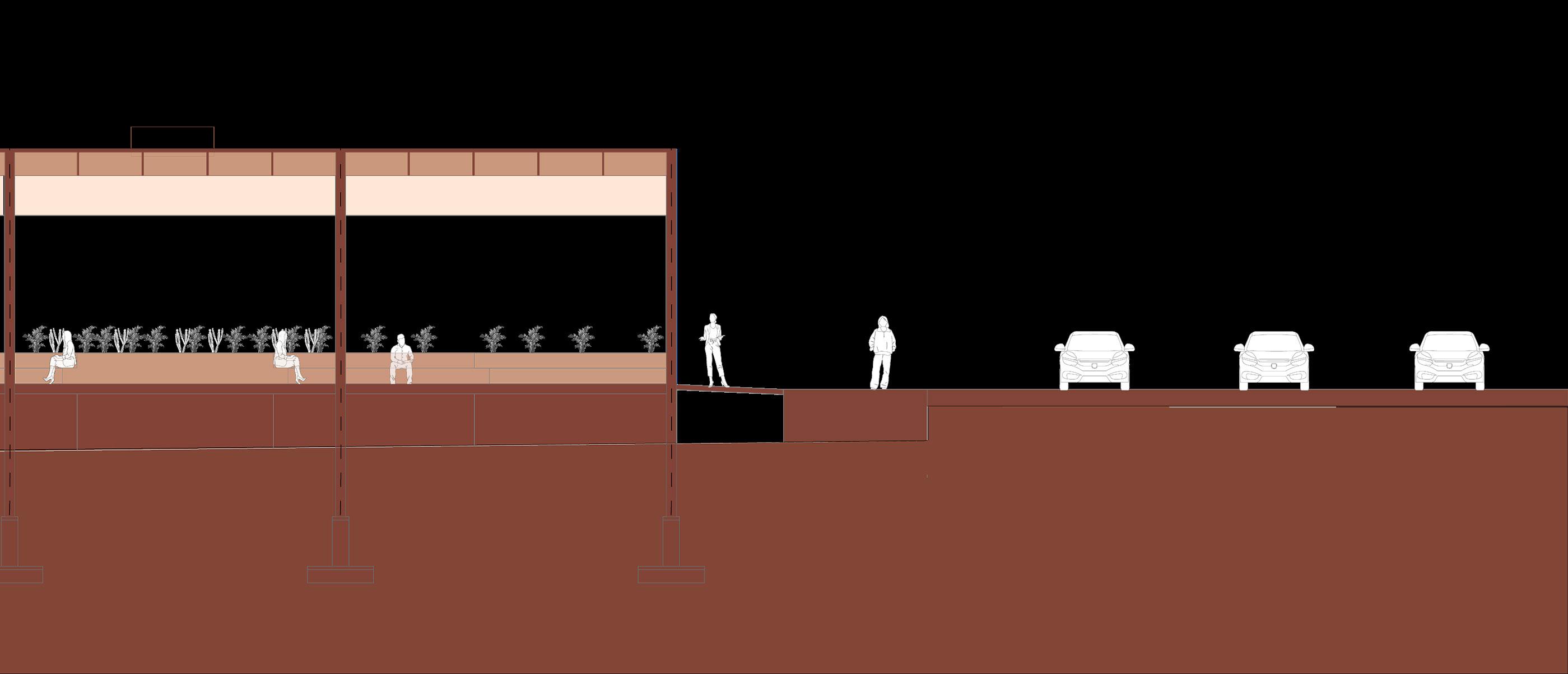
Cross - section I-ISCALE 1-125
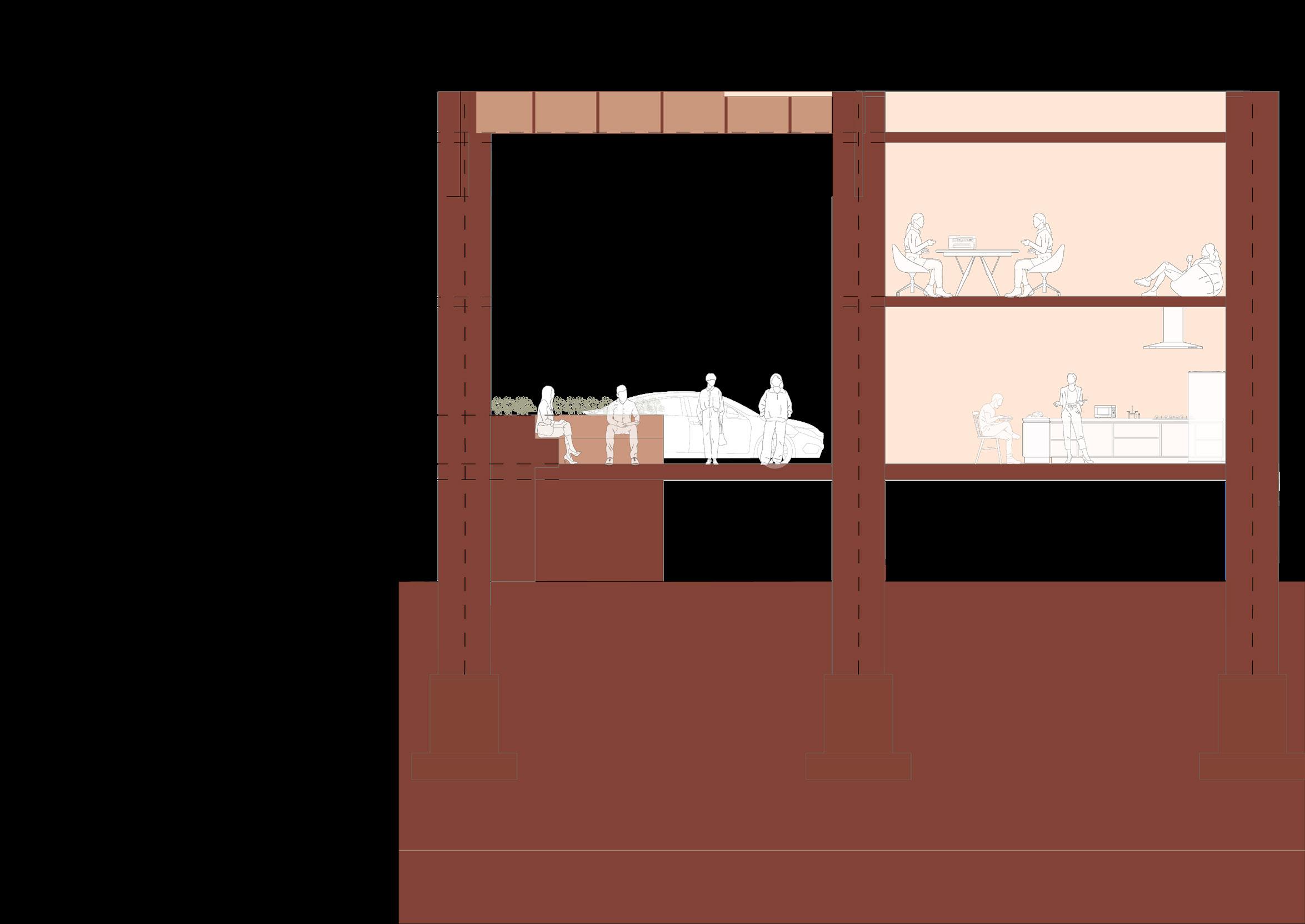
Facade cutting

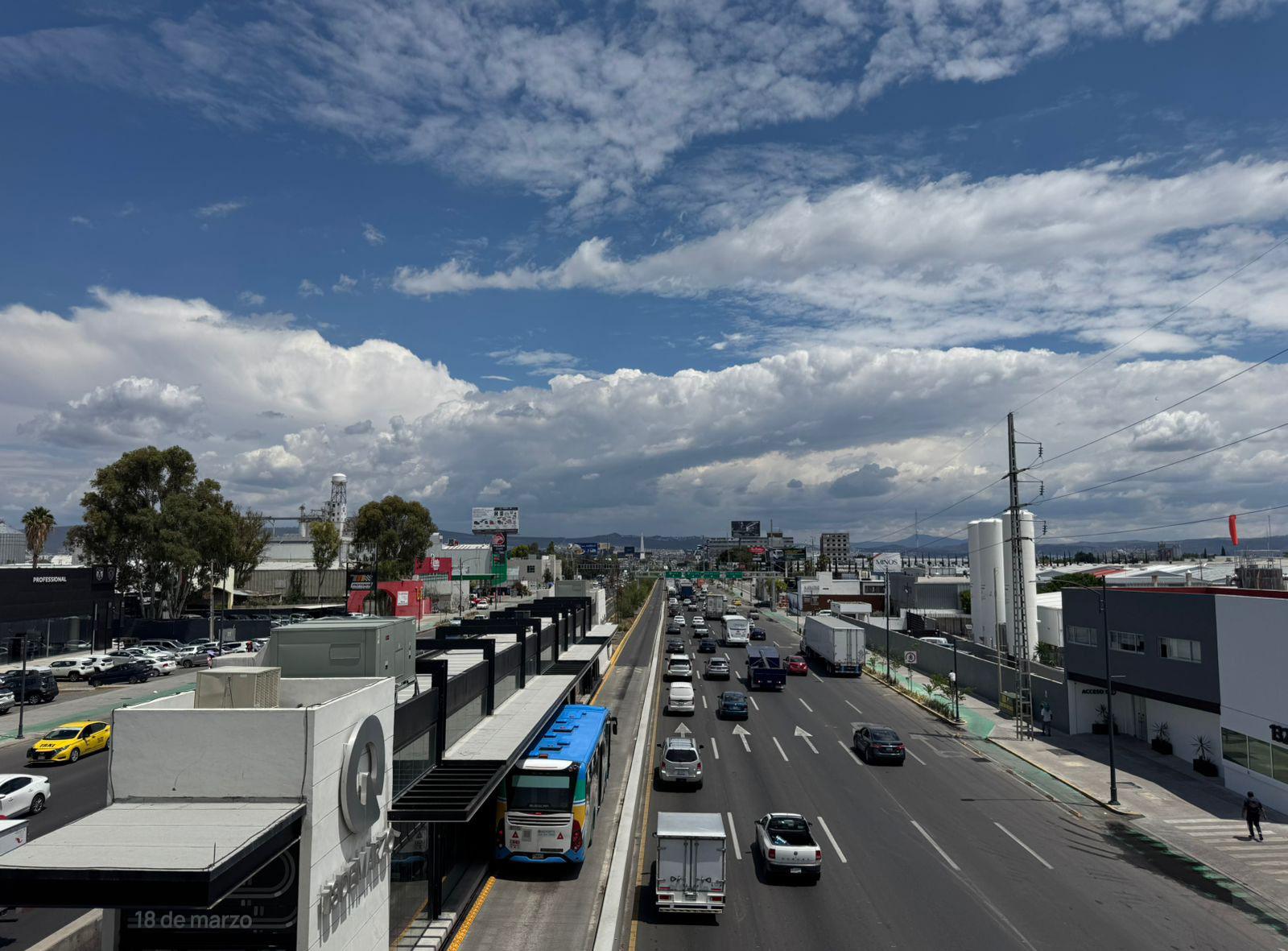
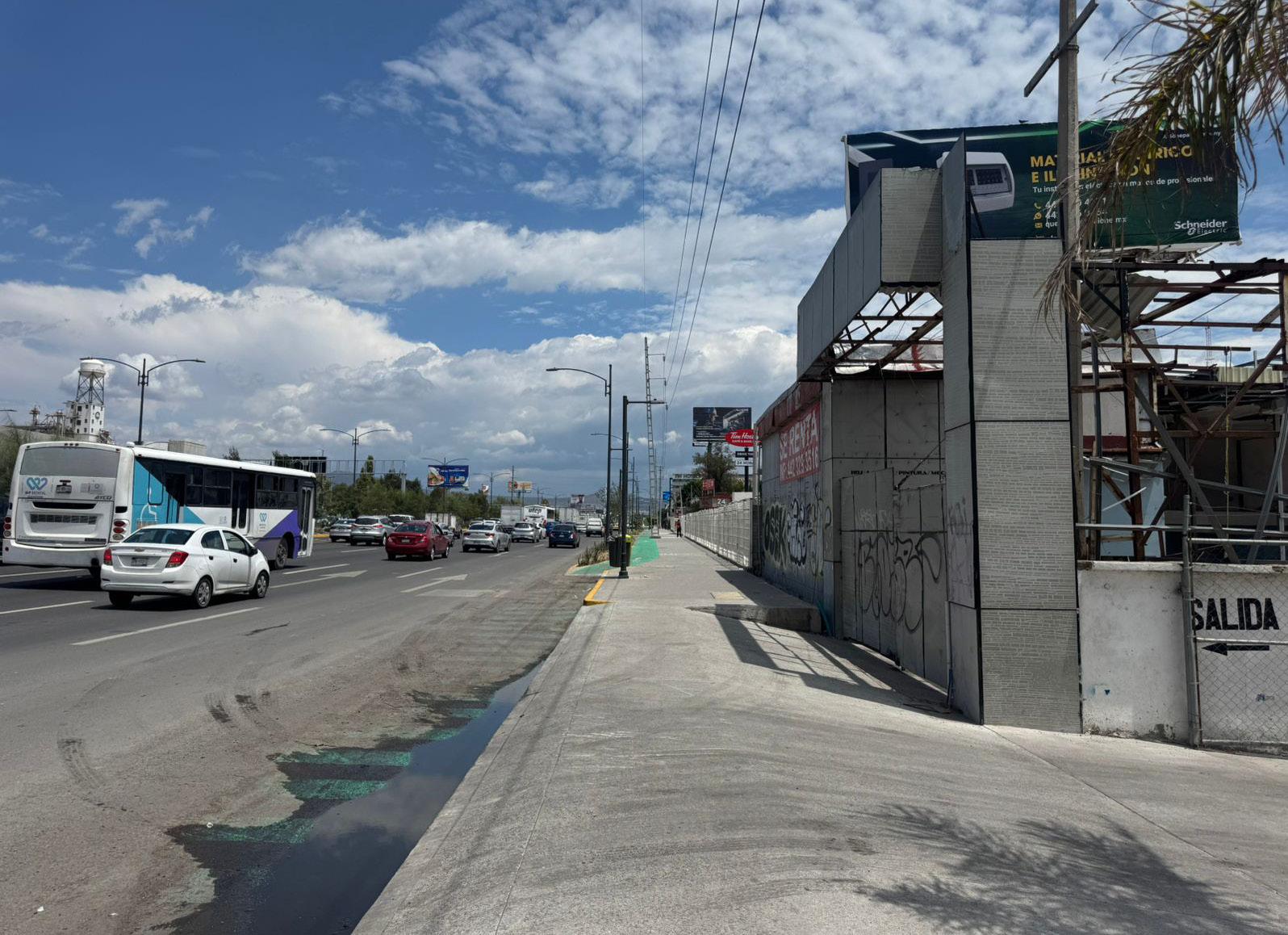



Work program crops
work program crops
Crop Planting planning Farming calendar Work distribution Resources required sustainable system Monitoring and evaluation Marketing or use
Nopal planting in furrows planting every 15 months Work distribution seeds, tools, organic fertilizers, and labor seeds, tools, organic fertilizers, and labor
planting in furrows planting every 3 months Work distribution
Crop rotation
Crop rotation
Monitor growth, control pests and evaluate production. Monitor development, detect diseases and measure performance. compost and feed for crickets compost and feed for crickets
Lentejas
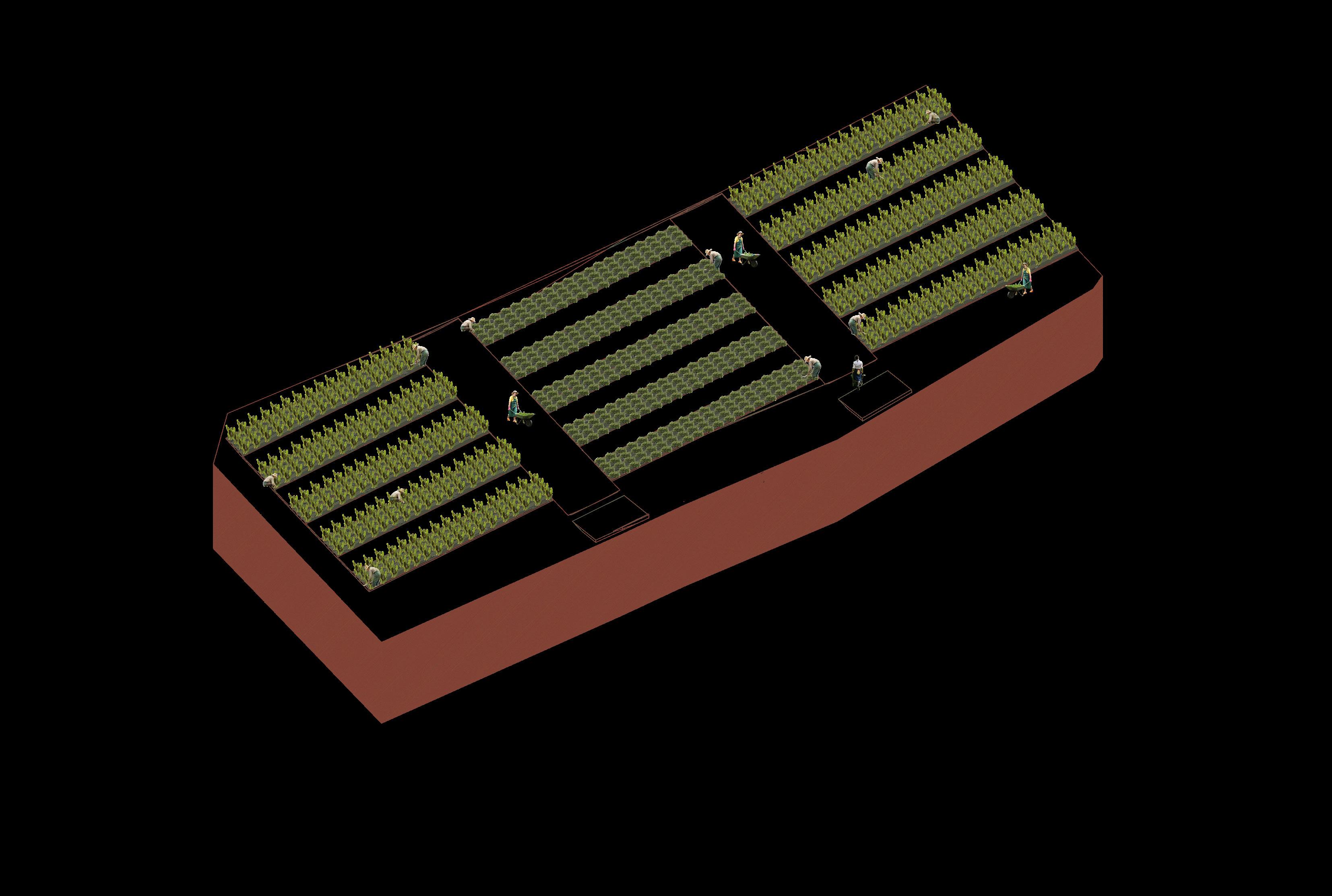
Work program building
Work program building
Symbology
1 P r epa r ati on of i n sect f oo d
2. a r v ae h a tcher y
3. cric k et hatcher y
4. sepa r ati on o f cric k ets a n d w as t e
5 c o mp o stin g
6. r esea r ch ab o r a t o rie s
7 nsect p r epa r ati o n
8. n sect dryi n g
9 i n sect mil i n g a n d pac k agi n g
1 0 f i n ish e d p r o d uct s t o r a g e
1 1. admi n ist r ati v e o f f ice s
1 2. r est a r ea / ca n t een f o r w o r k er s
1 3. D r essin g r oo ms f o r w or k er s
1 4. T o ol s t o r age f o r culti v ati o n
1 5. bath r oo ms f o r w o r k er s
1 6 public r est r o o m s
At night, the project shows its flexibility. The commercial building at the front, open towards 5 de Febrero, remains active as a space for meetings and light activities beyond production hours. The production building, although paused, maintains its potential for temporary tours and uses, showing an architecture ready to transform according to the needs. Thus, the project not only fulfills its daytime function, but also adapts to the nighttime context, allowing each space to be reactivated with new dynamics.

Detailed cross section B-B’

Detailed cross section A-A’
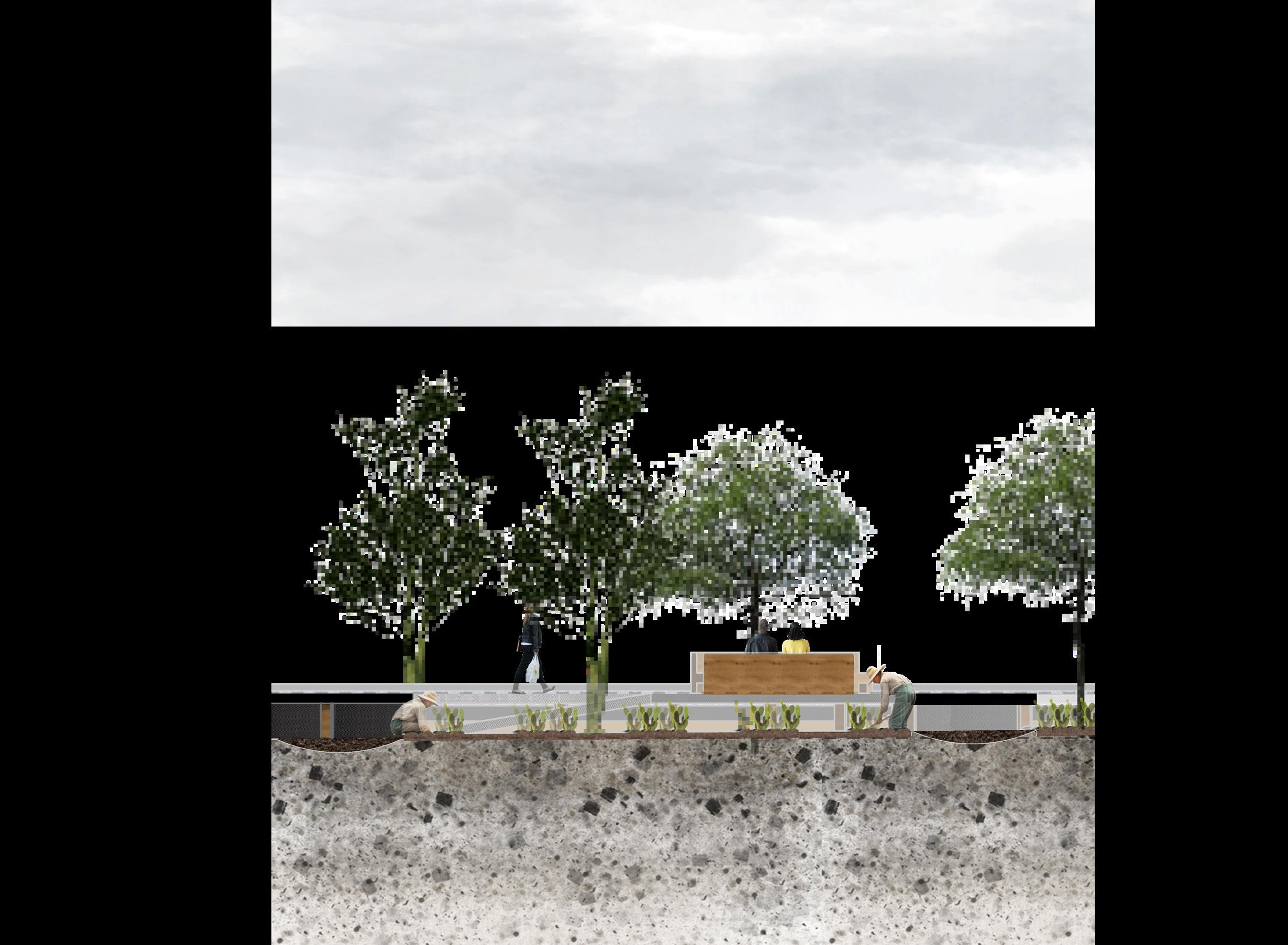

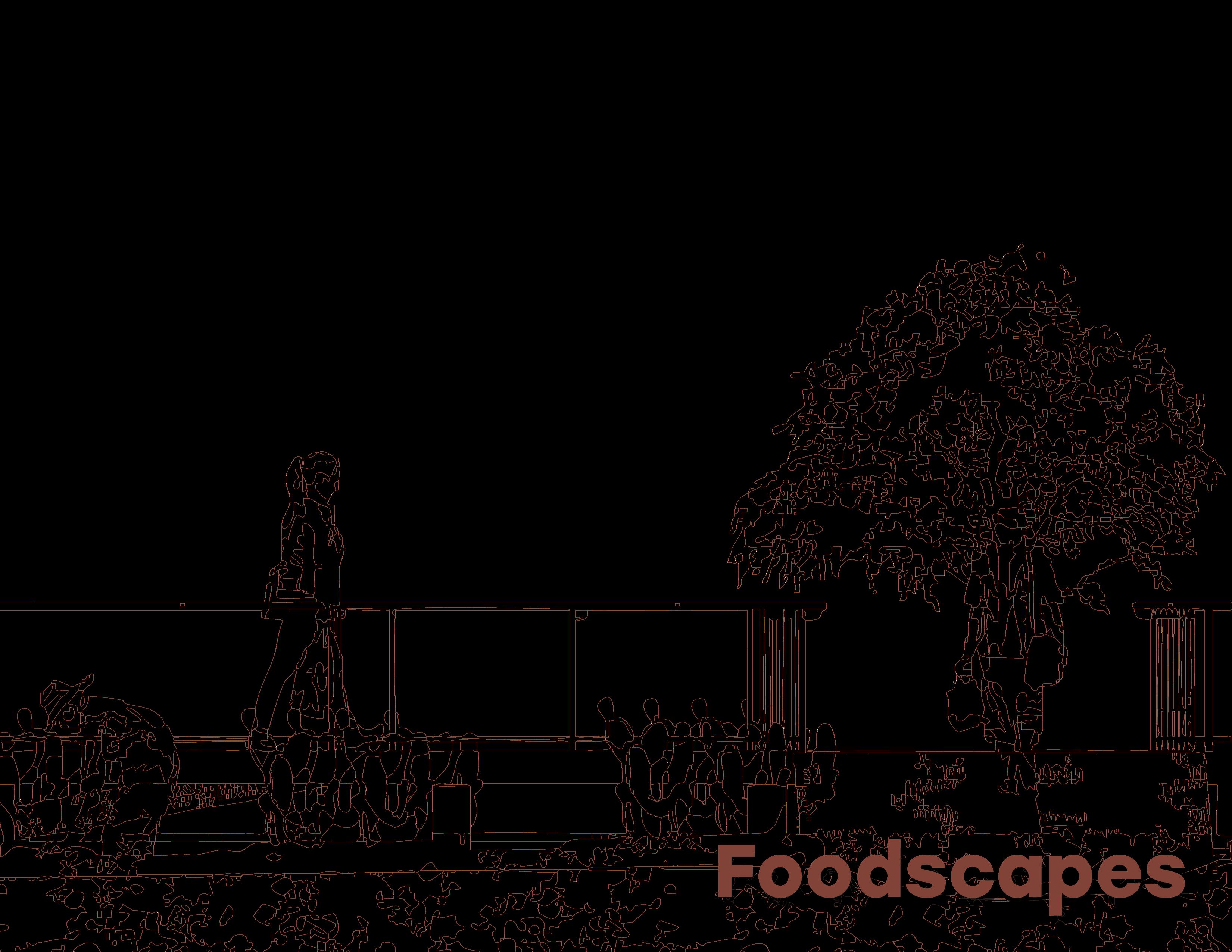
Longitudinal section D-D’

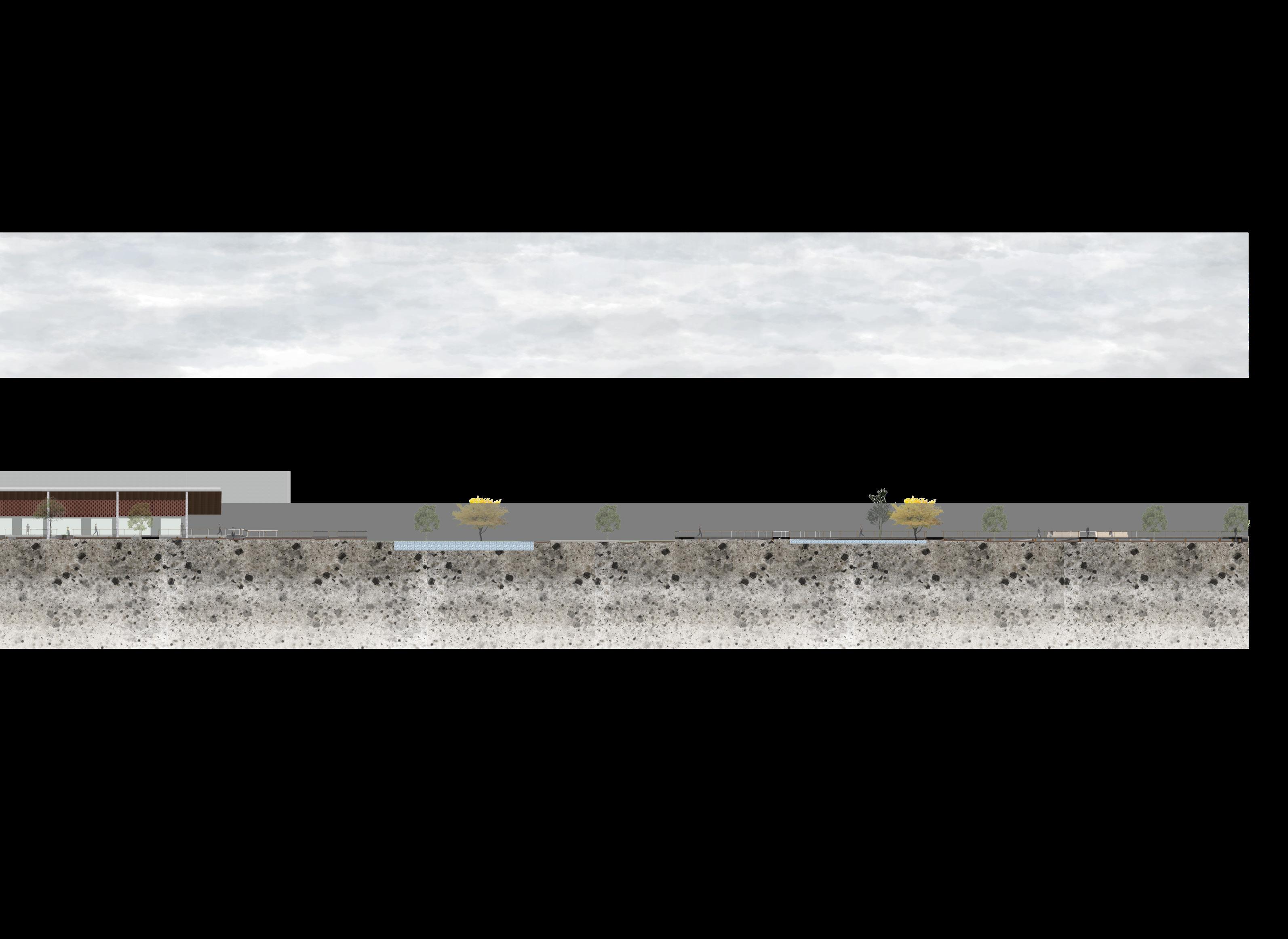
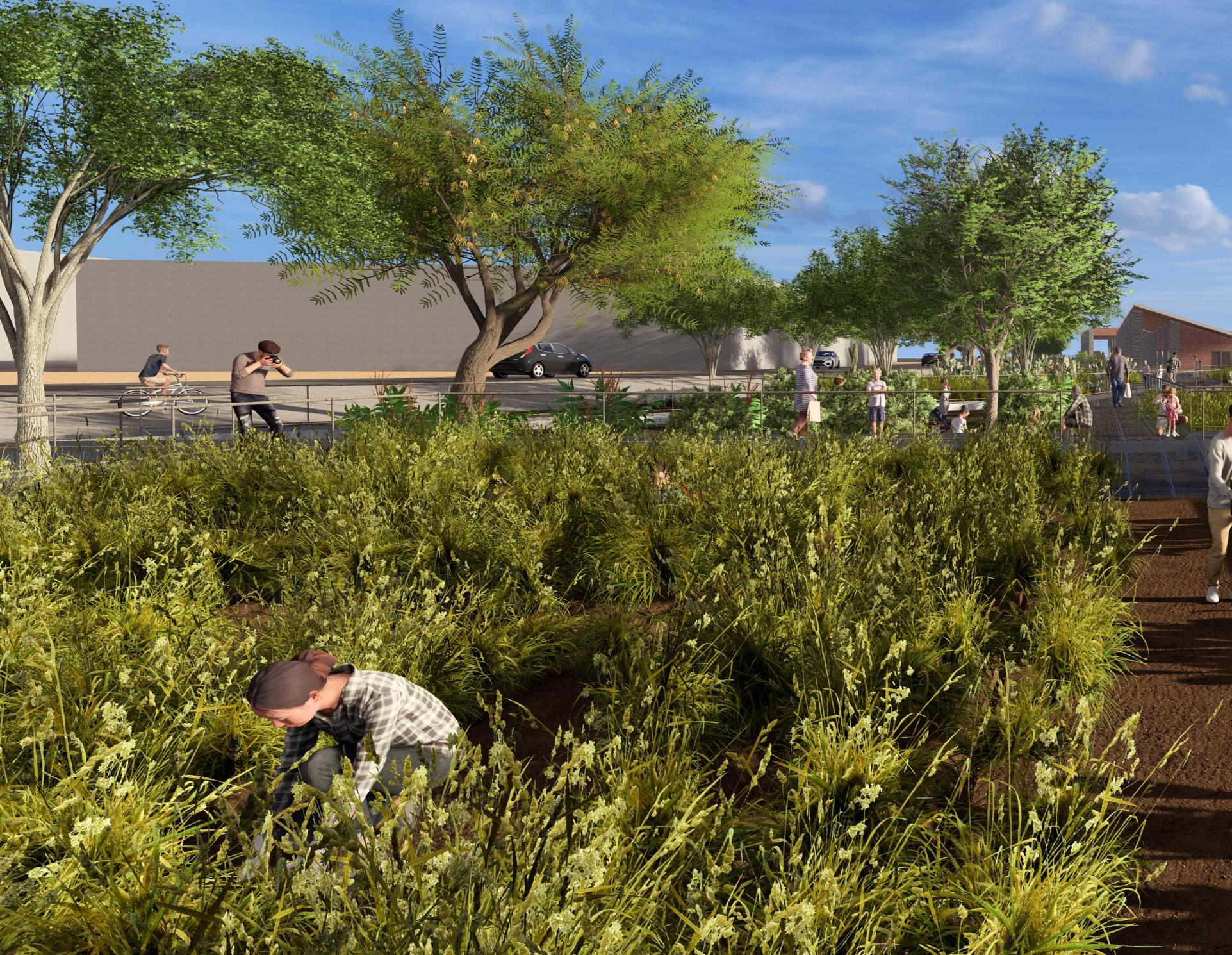
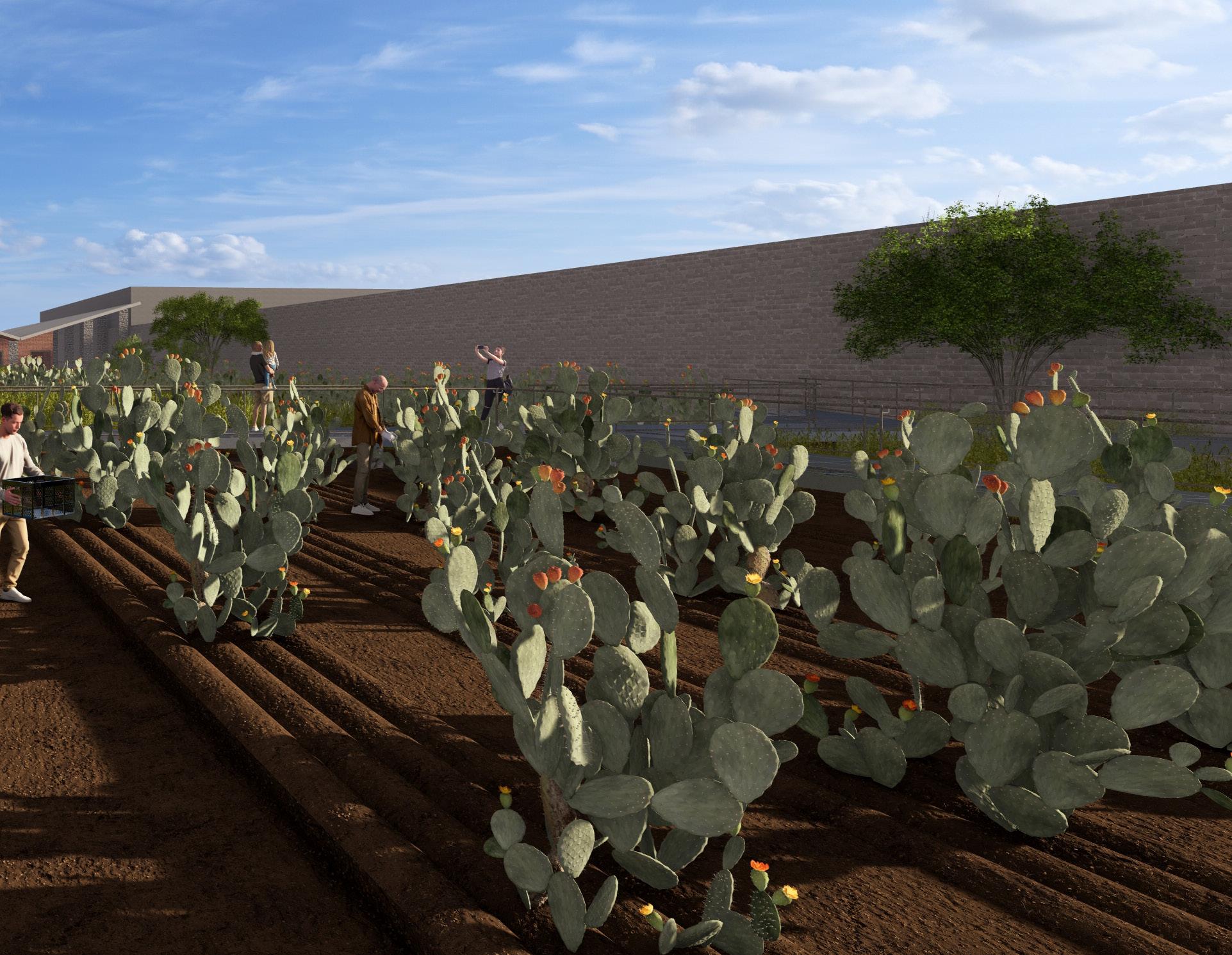


Cross - section F-F’


Longitudinal section C-C’
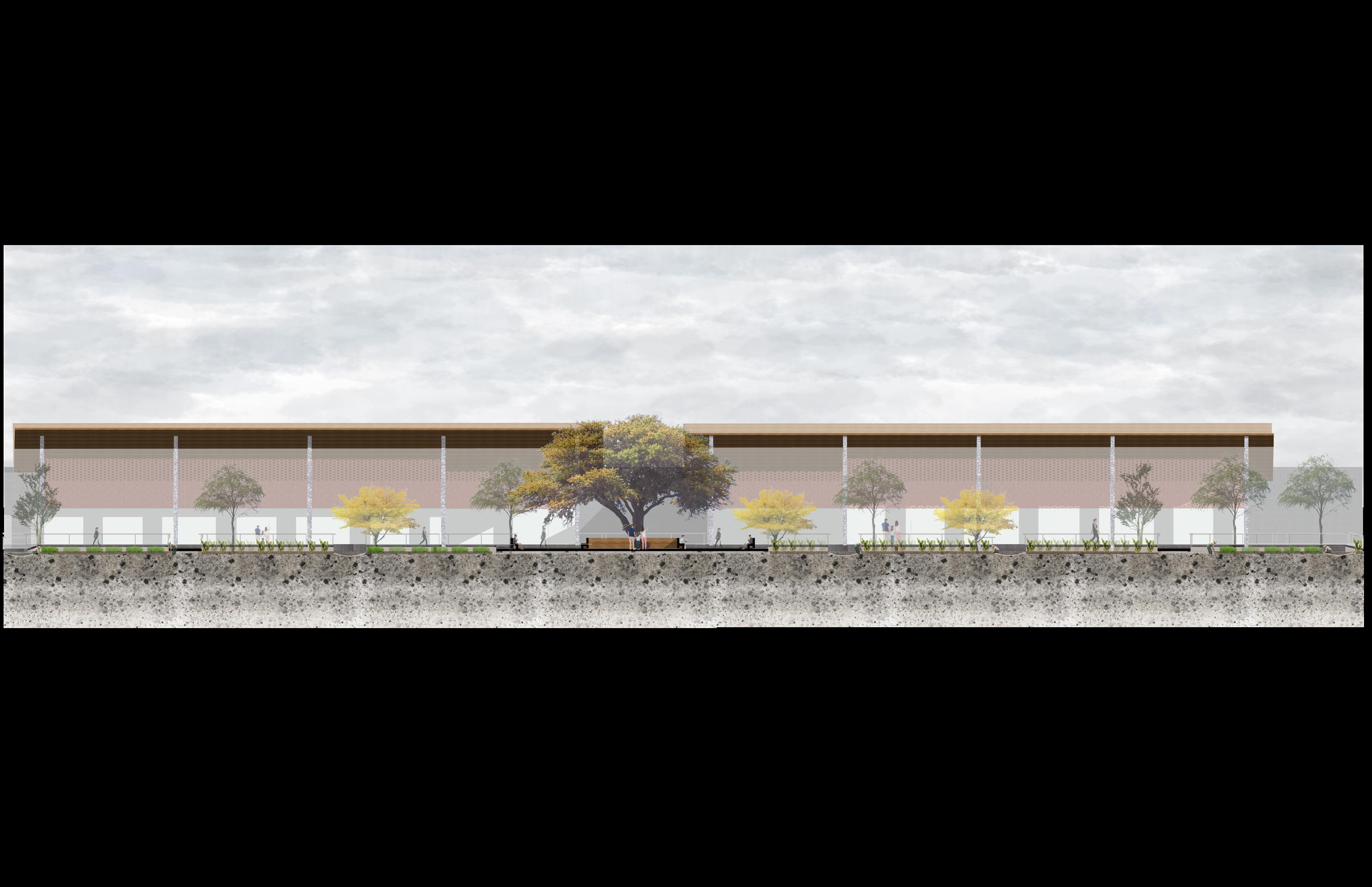
Croos section E-E’
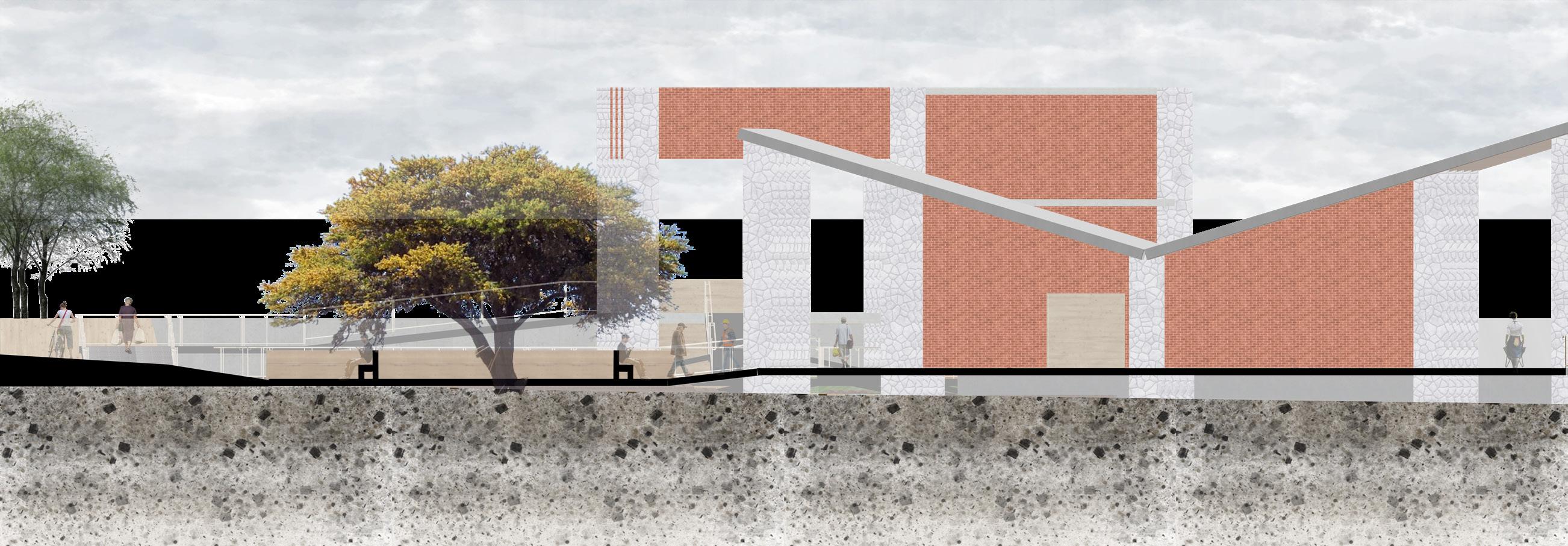


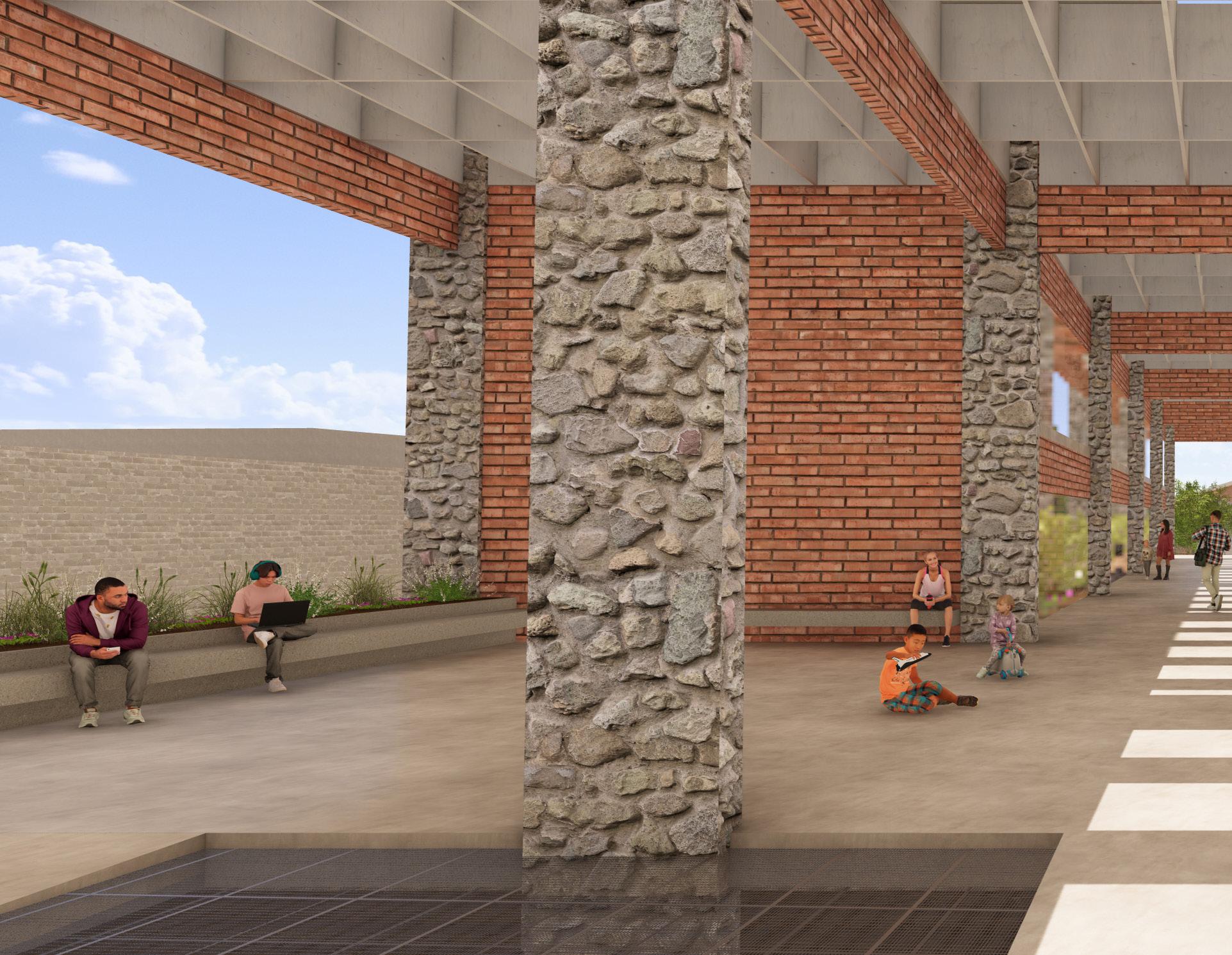

Cross section A-A’

Croos section B-B’

C-C'2
C-C'2
E-E'2
E-E'2
F-F'2
F-F'2
G-G'2
G-G'2
H-H'2
D-D'2
D-D'2
Agencia Internacional de Energía Atómica. (s.f.). Mejora de la fertilidad del suelo. https://www.iaea.org/es/temas/mejora-de-la-fertilidad-del-suelo
Alberta Pulse. (s.f.). Lentil seeding. https://albertapulse.com/lentil-seeding/
Castillo, C. M., et al. (2016). Análisis de la degradación y conservación del suelo en Querétaro. Revista Mexicana de Ciencias Agrícolas, 7(3), 561-570. https://www.scielo.org.mx/scielo.php?script=sci_arttext&pid=S0187-57792016000300271
CIMMYT. (s.f.). Adopción de la agricultura de conservación: una alternativa para evitar la degradación de los suelos en Querétaro. https://www.cimmyt. org/es/noticias/adopcion-de-la-agricultura-de-conservacion-una-alternativa-para-evitar-la-degradacion-de-los-suelos-en-queretaro/
Entocycle. (s.f.). Empresa dedicada a la producción de insectos comestibles. https://entocycle.com/
FAO. (s.f.). Fertilidad del suelo. https://www.fao.org/4/w1309s/w1309s04.htm
Gobierno de México. (2021). Reporte anual CIRCE Querétaro. https://www. gob.mx/cms/uploads/attachment/file/786304/REPORTE_ANUAL_CIRCE_ Quer_taro.pdf
Insect Nutrition México. (s.f.). Frass. https://insectnutrition.mx/pages/landing-frass
Jacto Blog LATAM. (s.f.). Suelos degradados. https://bloglatam.jacto.com/ suelos-degradados/
Líder Empresarial. (s.f.). Conoce 5 organizaciones de educación ambiental en Querétaro. https://www.liderempresarial.com/conoce-5-organizaciones-de-educacion-ambiental-en-queretaro/ Los Ángeles Times. (2021). Empresas que promueven insectos comestibles. https://www.latimes.com/espanol/internacional/articulo/2021-07-16/empresas-promueven-insectos-comestibles
Municipio de Querétaro. (2017). Revista 5. https://municipiodequeretaro.gob. mx/wp-content/uploads/2017/07/Revista-5-final.pdf
Municipio de Querétaro. (2020). Atlas de riesgos de Querétaro. https:// municipiodequeretaro.gob.mx/wp-content/uploads/2020/11/Atlas-de-Riesgos-de-Queretaro.pdf
National Center for Biotechnology Information (NCBI). (2016). Protein content values for edible insects. https://pmc.ncbi.nlm.nih.gov/articles/PMC4781901/
Next Food. (s.f.). Guía de insectos comestibles: acercamiento a los diferentes sistemas de cultivo. https://www.next-food.net/es/guia-de-insectos-comestibles/insectos-comestibles-acercamiento-a-los-diferentes-sistemas-de-cultiv
ResearchGate. (2020). Los sistemas de trabajo desde el campo profesional de la Ingeniería Industrial: revisión de la literatura. https://www.researchgate.net/publication/340173189_Los_sistemas_de_trabajo_desde_el_campo_ profesional_de_la_Ingenieria_Industrial_revision_de_la_literatura
Rotativo. (s.f.). Empresas dedicadas a la industria de insectos comestibles en Querétaro. https://rotativo.com.mx/metropoli/queretaro/empresas-se-dedican-a-la-industria-de-insectos-comestibles-en-queretaro_923430_102. html
Scribd. (s.f.). ¿Qué son sistemas de trabajos? https://es.scribd.com/document/365996495/Que-Son-Sistemas-de-Trabajos
SlideShare. (s.f.). Ejemplos de sistemas de trabajo del conocimiento. https:// es.slideshare.net/slideshow/ejemplos-de-sistemas-de-trabajo-del-conocimiento/14861928
Small Stock Foods. (s.f.). Nutritional value of various insects per 100 grams. https://www.smallstockfoods.com/nutritional-value-various-insects-per-100-grams/
Spanish Alibaba. (s.f.). Microwave insect Tenebrio, Yellow Earthworm, Mealworm. https://spanish.alibaba.com/product-detail/Microwave-Insect-Tenebrio-Yellow-Earthworm-Mealworm-1600225813526.html
Field Museum. (s.f.). [Fotografía de especie vegetal: Opuntia polyacantha]. https://fm-digital-assets.fieldmuseum.org/1501/865/POLO_poly_punc_nic_ shol4299.jpg
iNaturalist. (s.f.). [Fotografía de Coryphantha erecta]. https://inaturalist-open-data.s3.amazonaws.com/photos/341574033/original.jpeg
iNaturalist. (s.f.). [Fotografía de Melinis repens]. https://inaturalist-open-data.s3.amazonaws.com/photos/97248560/medium.jpeg
Ruth Bancroft Garden. (s.f.). [Fotografía de Peniocereus serpentinus]. https://www.ruthbancroftgarden.org/wp/wp-content/uploads/0410-Peniocereus-serpentinus-scaled.jpg
Twitter / Usuario no identificado. (2020). [Fotografía de planta silvestre: cactus]. https://pbs.twimg.com/media/EbkaBcHXYAE2OQg.jpg:large
Wikimedia Commons. (s.f.). [Fotografía de Agave filifera]. https://upload. wikimedia.org/wikipedia/commons/thumb/1/1f/Agave_filifera_002.jpg/1200px-Agave_filifera_002.jpg
ArbolApp Canarias. (s.f.). [Imagen ilustrativa de especie vegetal no especificada]. https://www.arbolappcanarias.es/imagenes/especies/especie_050_06.jpg
Fuente anónima (Kyw-public). (s.f.). [Imagen de Dalea bicolor]. https:// eyJidWNrZXQiOiAia3l3LXB1YmxpYy13ZWVkLWltYWdlcyIsImtleSI6ICIyMDIxLzIvMTYzMDhfRGFsZWEgYmljb2xvcl8yLmpwZyIsImVkaXRzIjogeyJyZXNpemUiOiB7IndpZHRoIjogNDUwLCJoZWlnaHQiOiA0NTAsImZpdCI6ICJjb3ZlciIsIndpdGhvdXRFbmxhcmdlbWVudCI6ZmFsc2V9fX0
Google Images (Fuente no especificada). (s.f.). [Planta no identificada, imagen de referencia]. https://encrypted-tbn0.gstatic.com/images?q=tbn:ANd9GcSjI04VFSMBP04E6arcO1crvMIJoCfA7iYOLA&s

